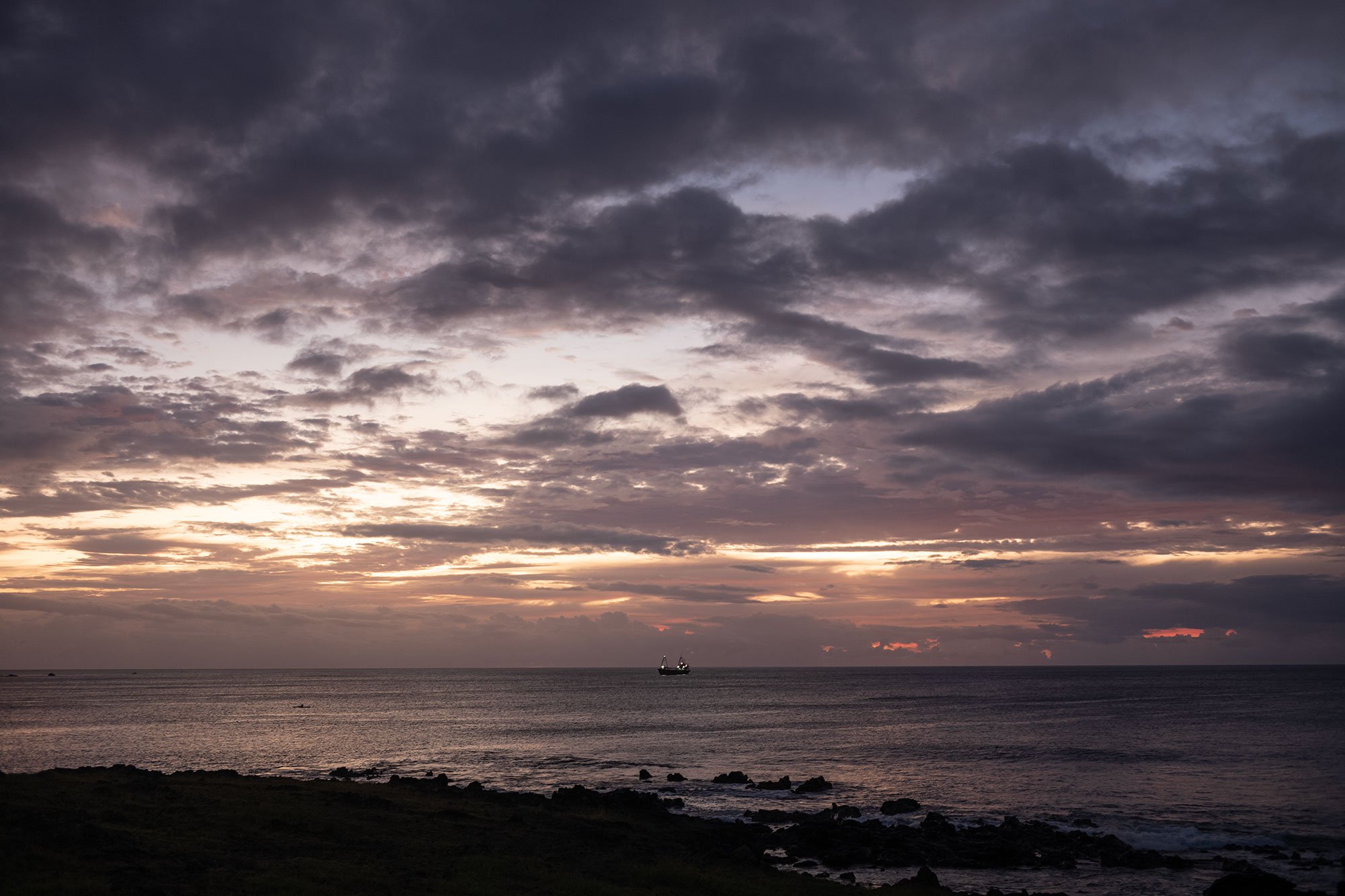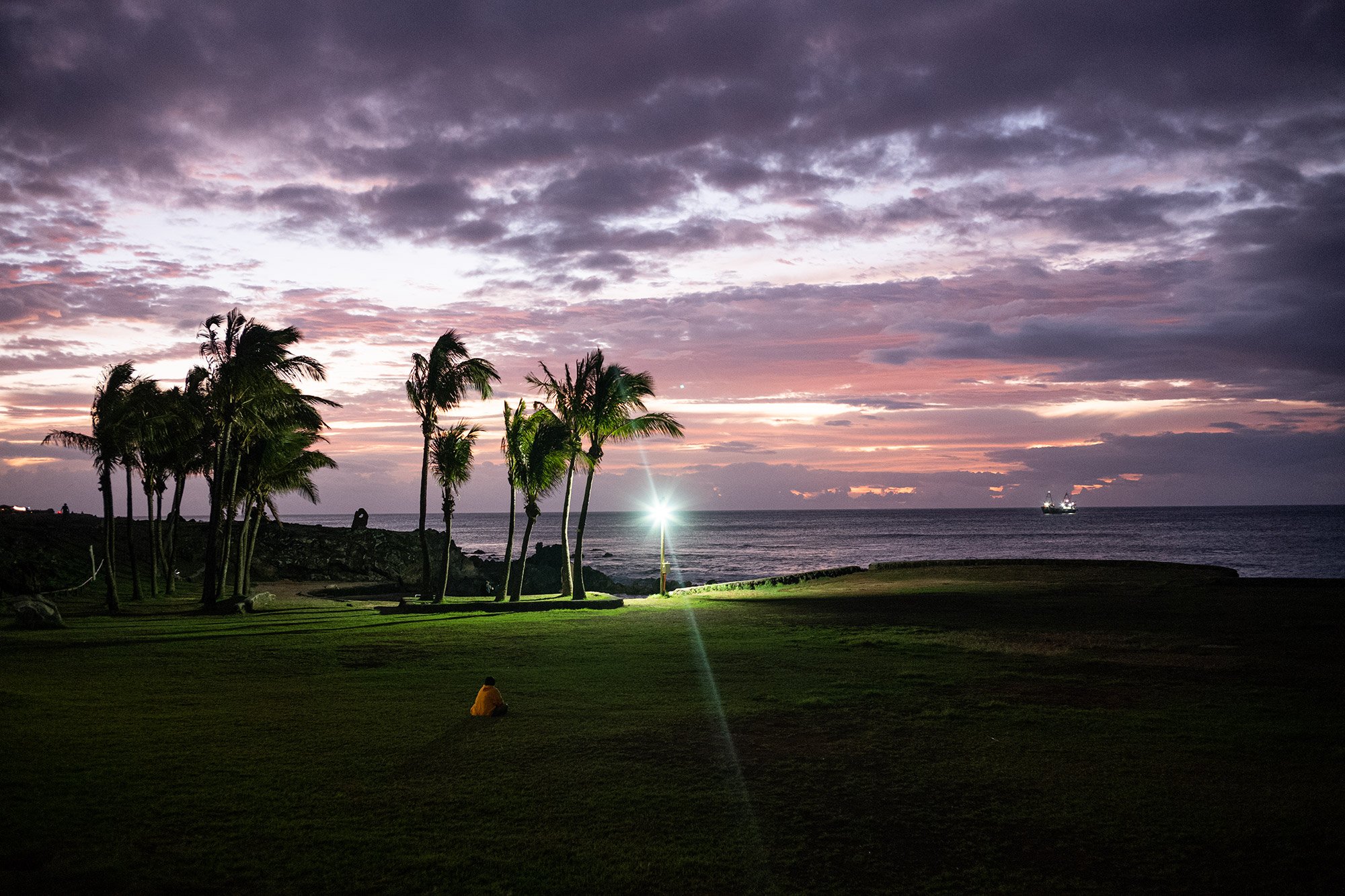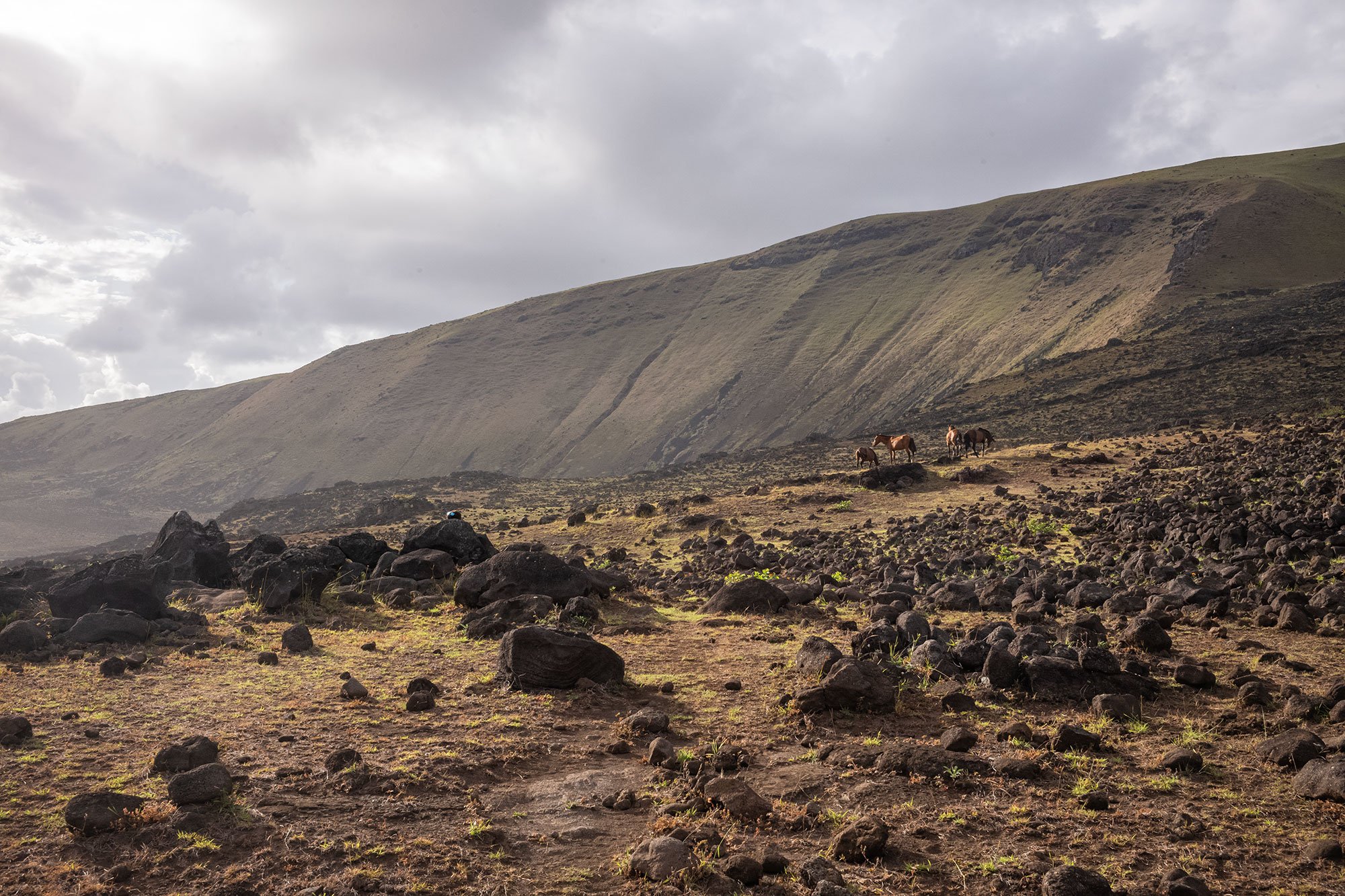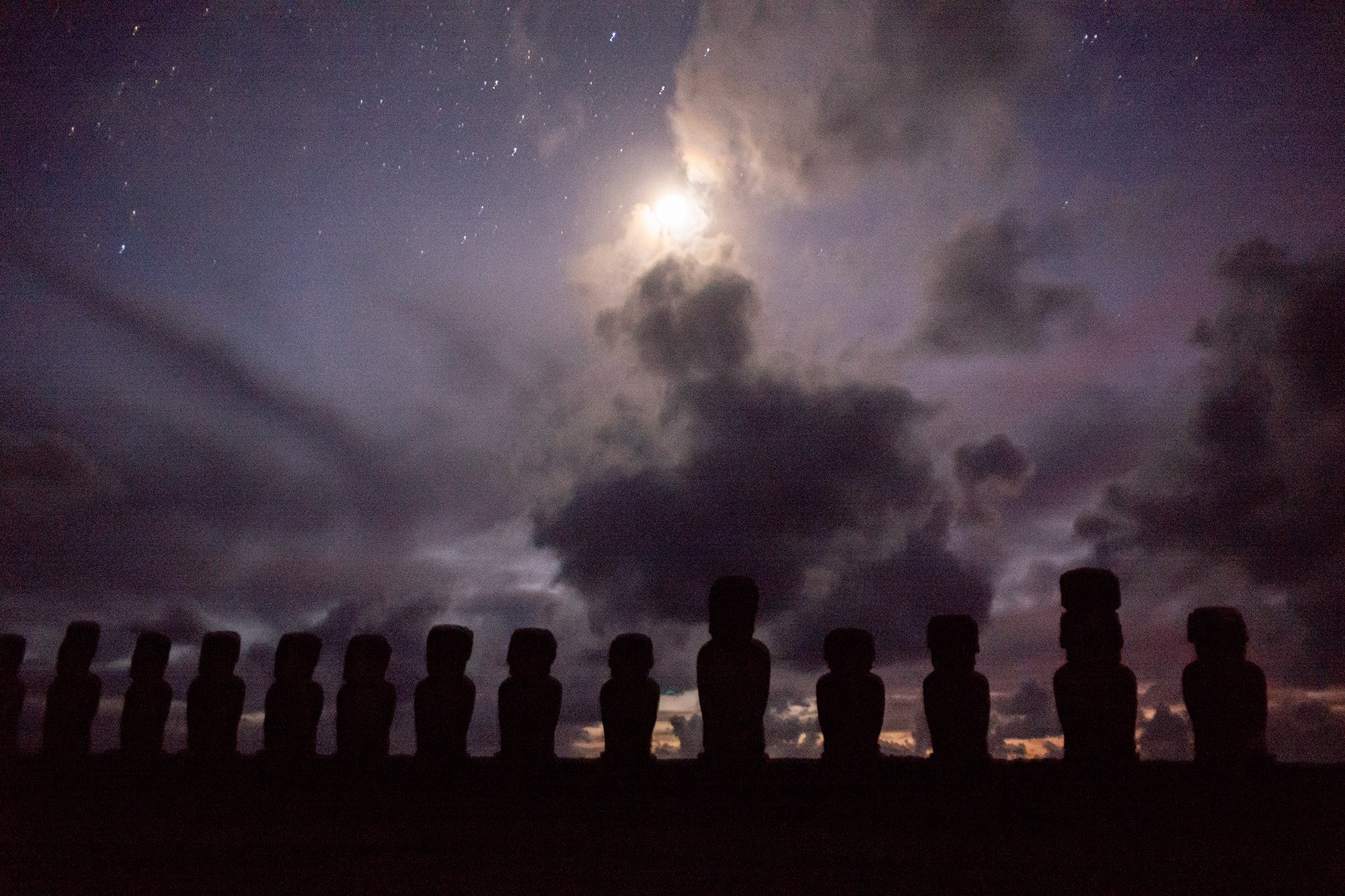
Easter Island: Chapter two
Sunrise at Ahu Tongariki to sunset at Ahu Tahai.
I don’t get much sleep.
Between the excitement of being on the island, the desire to get up to take another look at the Milky Way, and the insects that bite me intermittently throughout the night, it’s almost impossible to sleep through the night. At one point, I get up and walk outside to gaze up again at the stars. I tell myself I’ll go back to sleep after I see one more shooting star. And then I tell myself I’ll go back to sleep after I see the next one.
Alice tells me she didn’t get much sleep either. It’s her first time in a cave and she’s open to trying it again, but she thinks another cave. She’s from a much larger island in Patagonia, and Tonchi tells me when he visited her there it was the first time he experienced such cold and he was excited to don a thick puffy jacket.
• • •
We are up before the dawn and I help Alice and Tonchi pack up our sleeping mats and bags. Miti is the soundest sleeper and Alice has to wake her so that we can finish packing. Tonchi starts his motorcycle and I get into the truck with Alice and we drive from our campsite to Ahu Tongariki, the former capital of the capital of the Hotu-iti clan, notable for the 15 moai erected there including, at eighty-six tonnes, the heaviest ever erected on the island.
It’s dark when we arrive and I leave Alice and Miti in the car. Tonchi walks me into the site and I find a spot to park myself to wait for the sunrise. Once I’m situated, Tonchi takes his leave. He and Alice are to guide a group on horseback and he has to get back to ready the horses for the trip. I thank him and promise to send him photos once I post them.
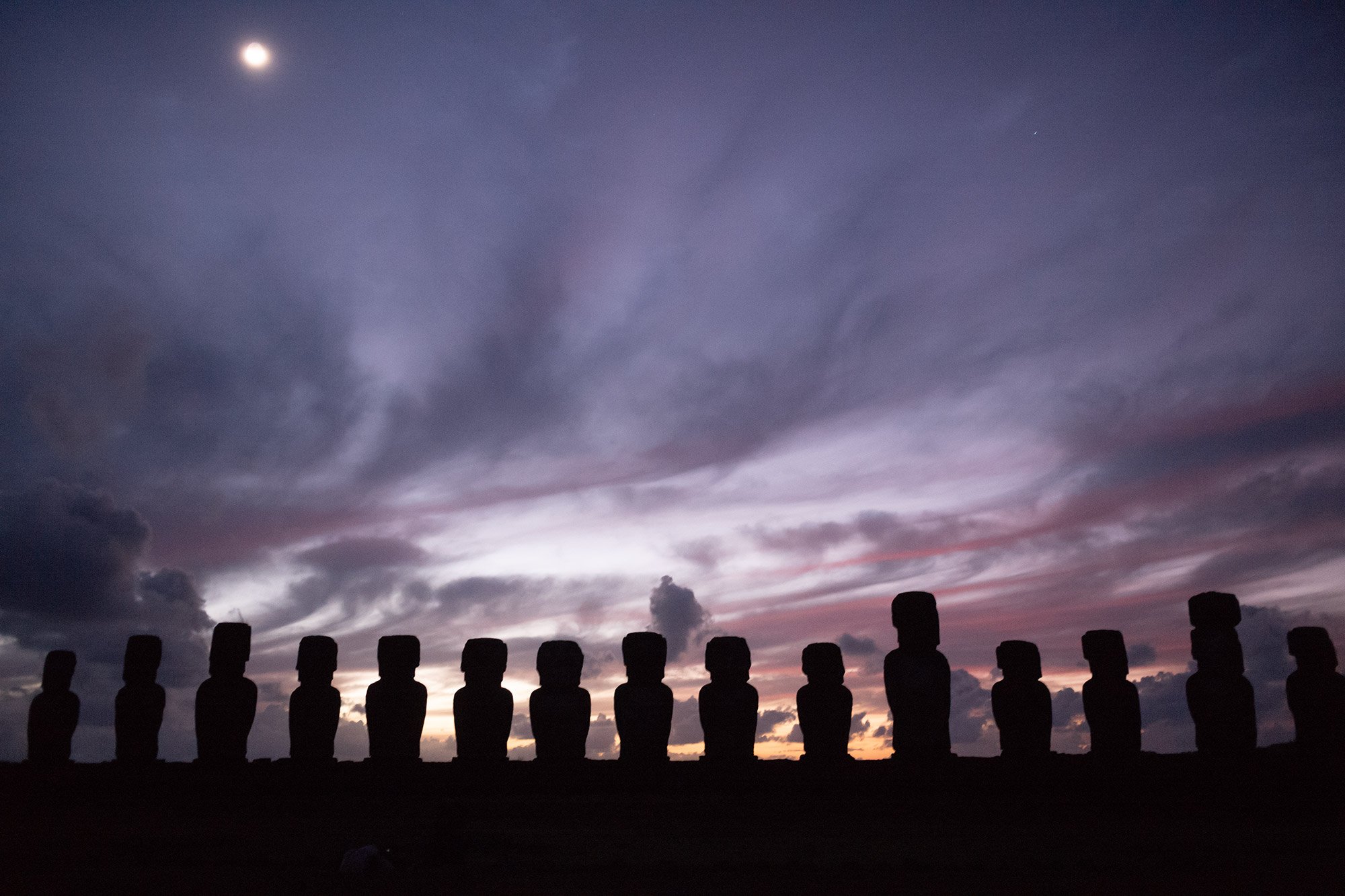
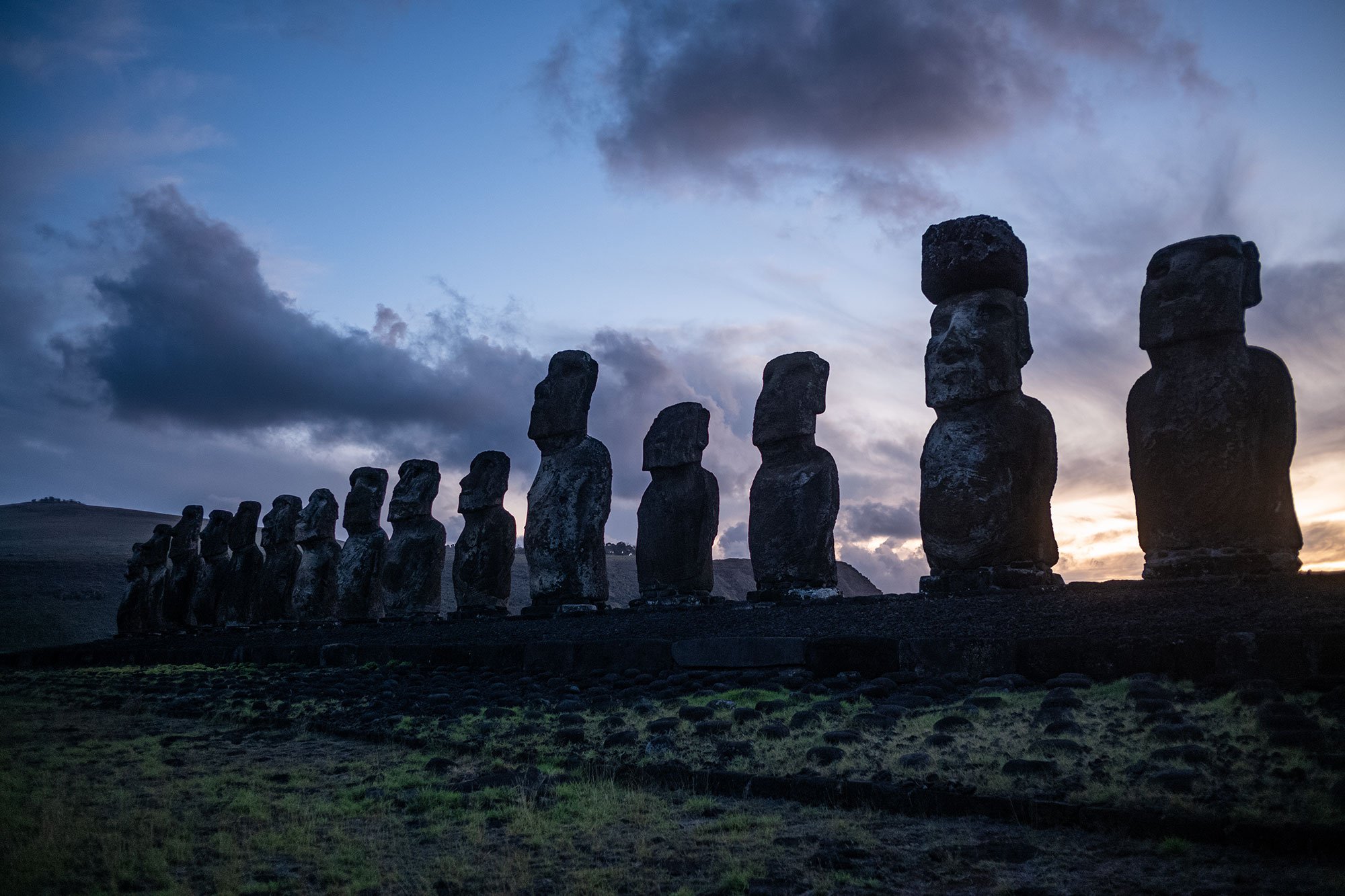
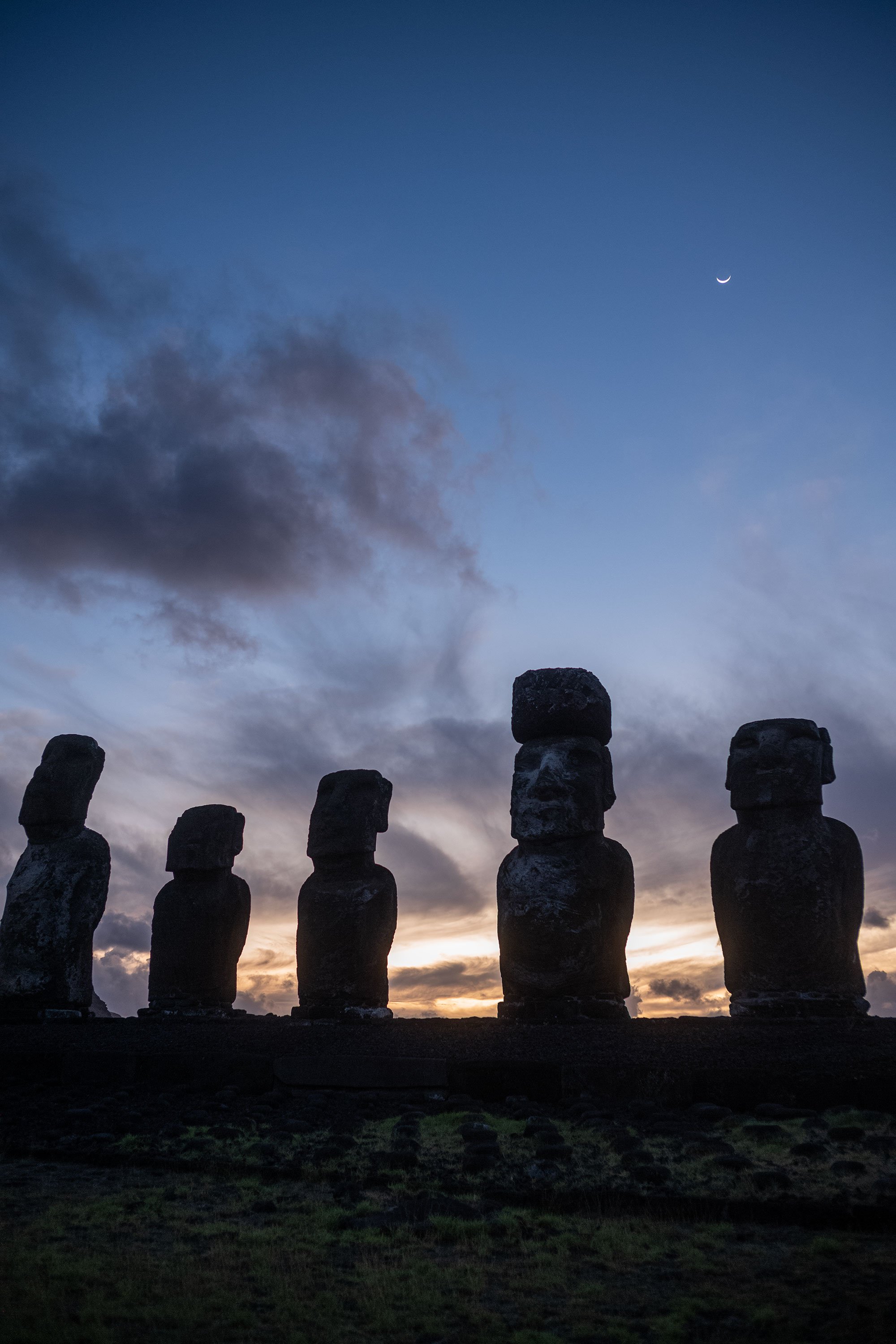
The sunrise is stunning, made more so by the location. People are scattered about the fields in front of the moai and as the day becomes lighter, they move around to find better angles for their photographs. Some have packed picnic breakfasts with thermoses of coffee to ward off the chill.
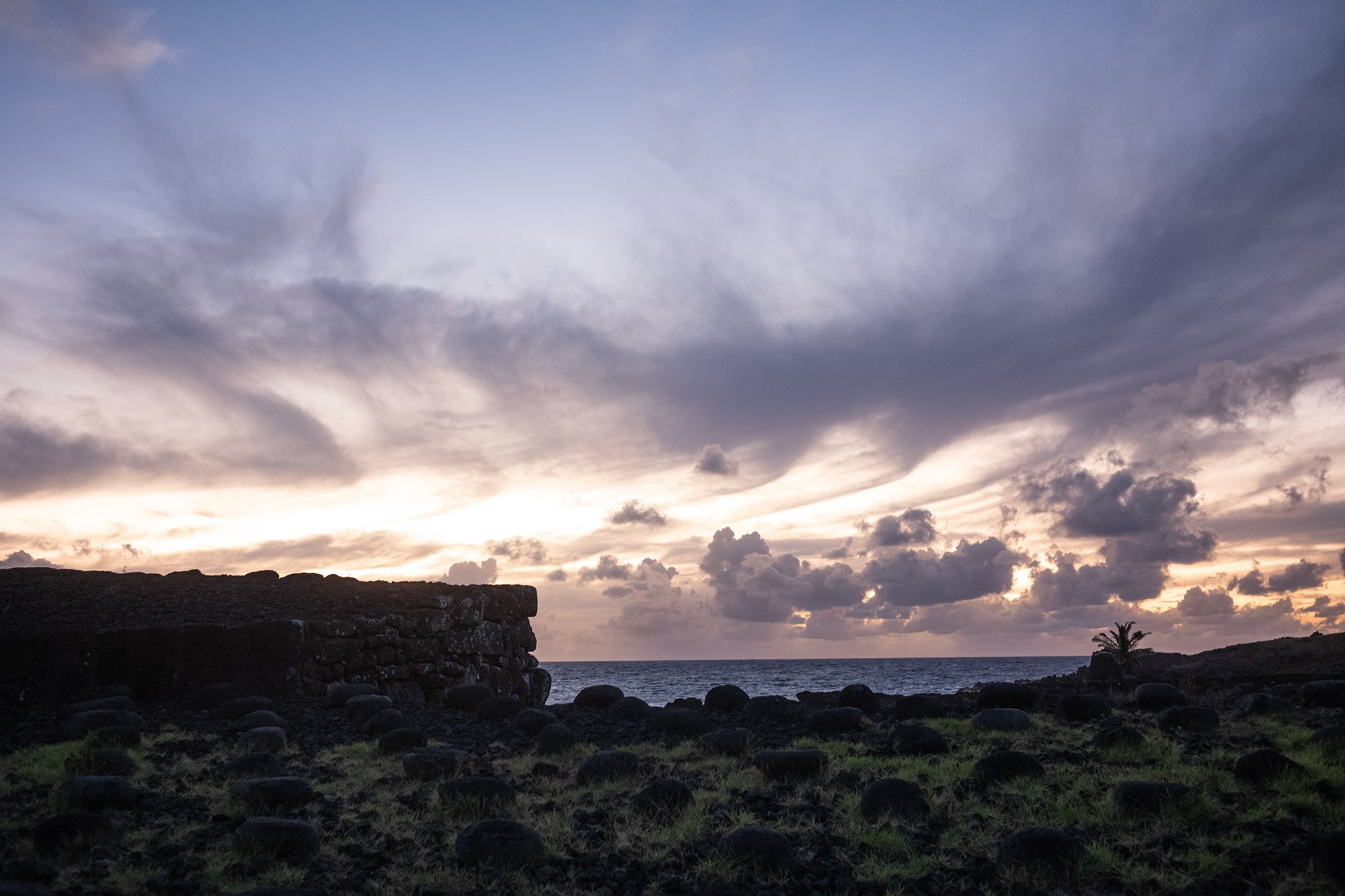
Soon the, the skies have turned blue and the day begins. I walk around the moai and explore the fields. Yoyo, my next guide is to meet me at 8:00 in the morning and so I make myself busy, exploring what I can while I wait. It’s all I can do to keep from filling up my card with photos, knowing that I’ll end up taking all the same photos again once Yoyo arrives and walks me around the site.
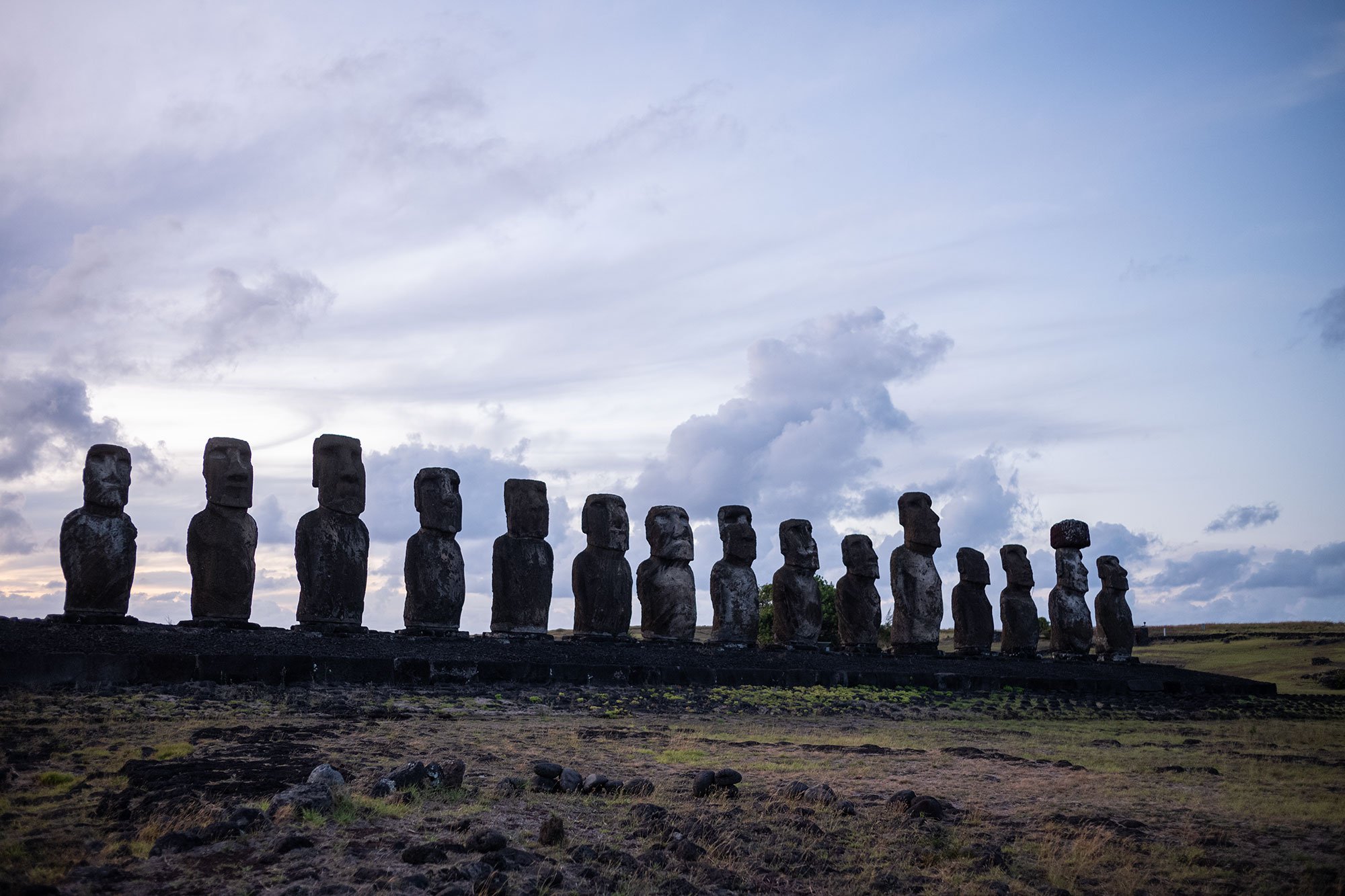
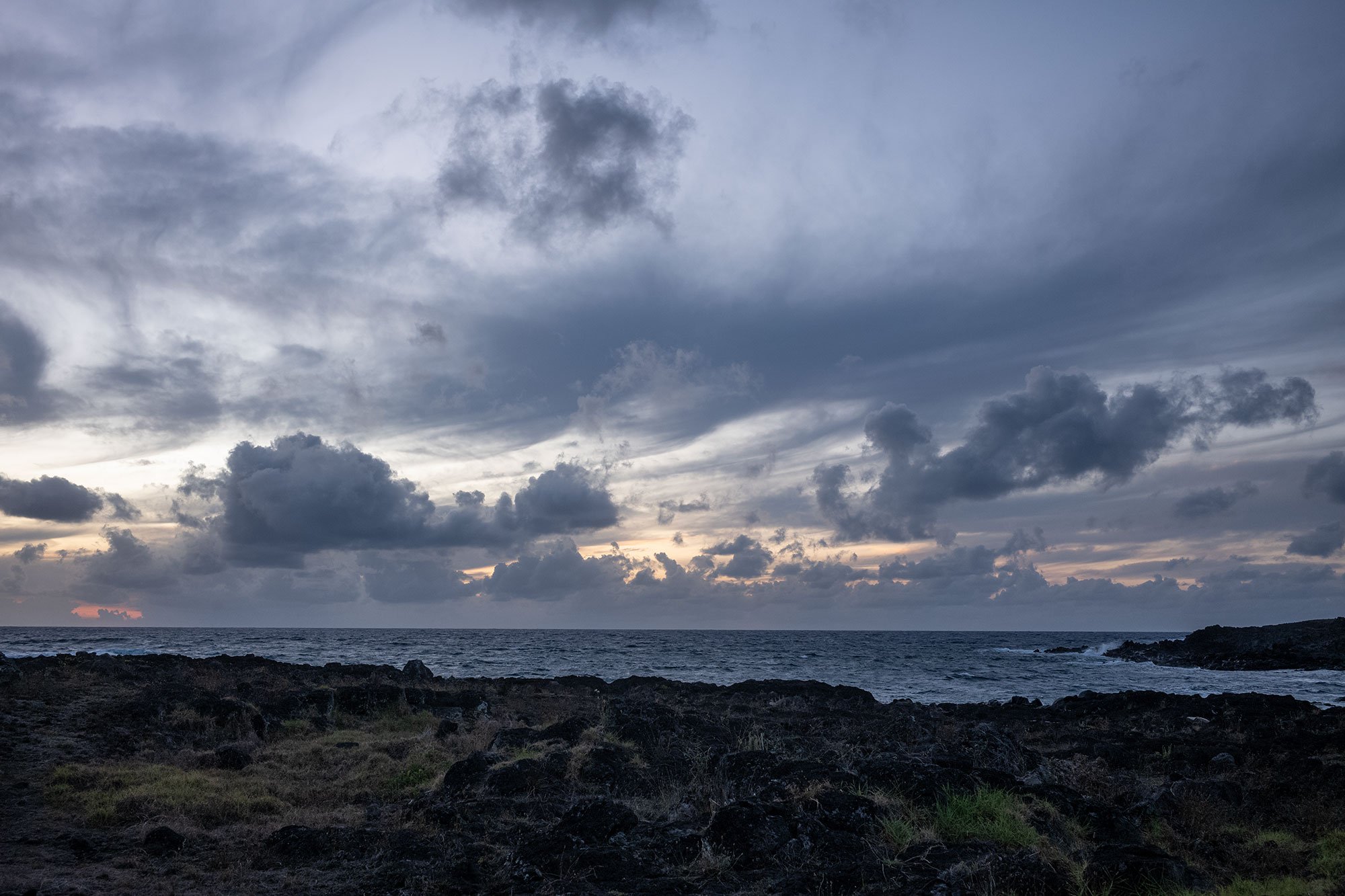
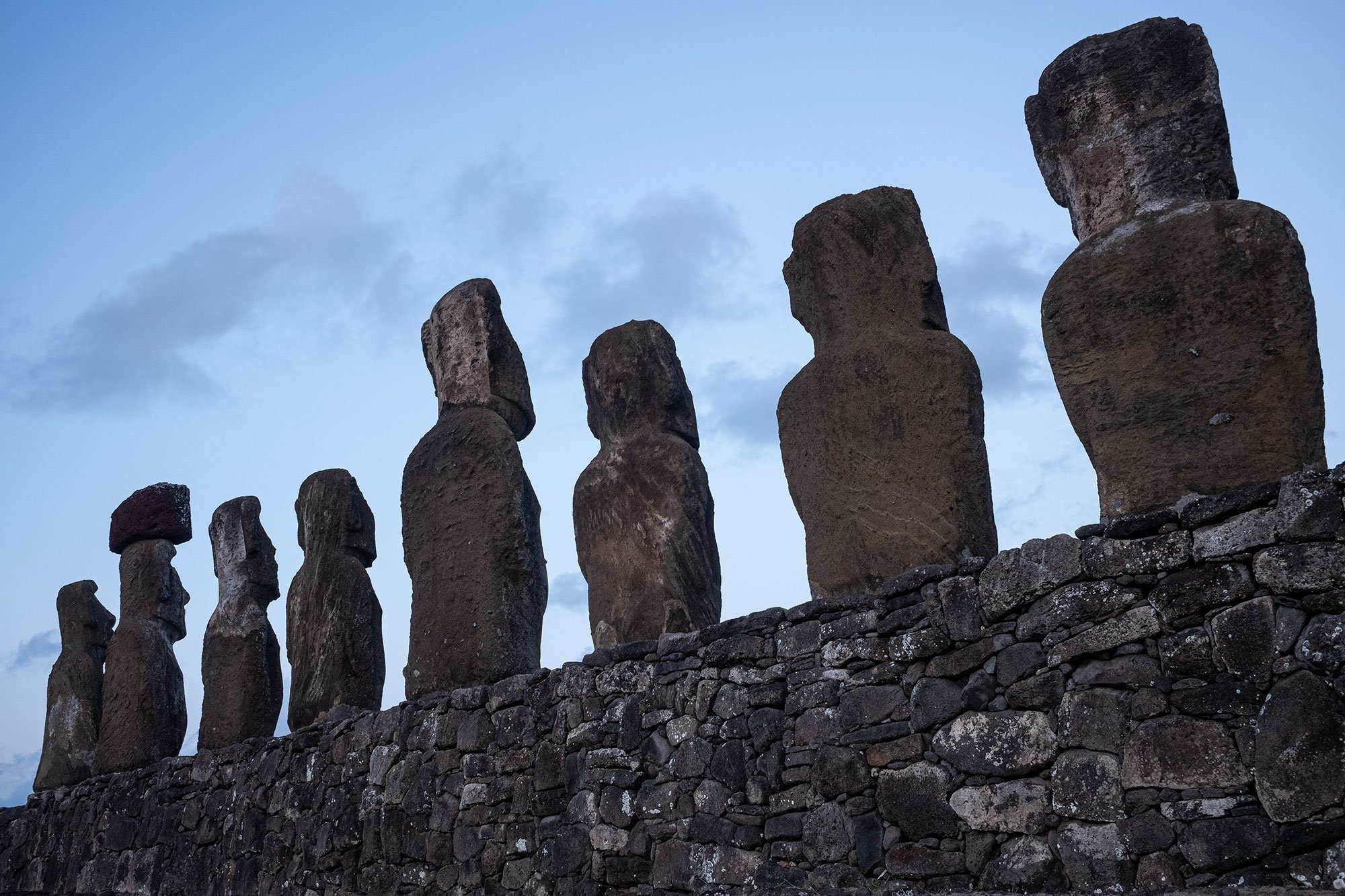


At around 8:00 I walk back to the entrance of the park to look for Yoyo. Most of the people had left and I keep looking for individuals walking alone who might be someone looking for someone to guide. There are only one or two cars in the parking lot; no one was looking for me.
A few minutes later, Yoyo drives up in his car. He steps out in safari gear and introduces himself, then asks me if I’m ready to explore.

Yoyo takes me back around to the back of the moai as he talks about the village that was once here and the civil wars that toppled them. The moai mainly reflect the living faces of deified ancestors, and generally gaze inland towards the villages they are meant to watch over.
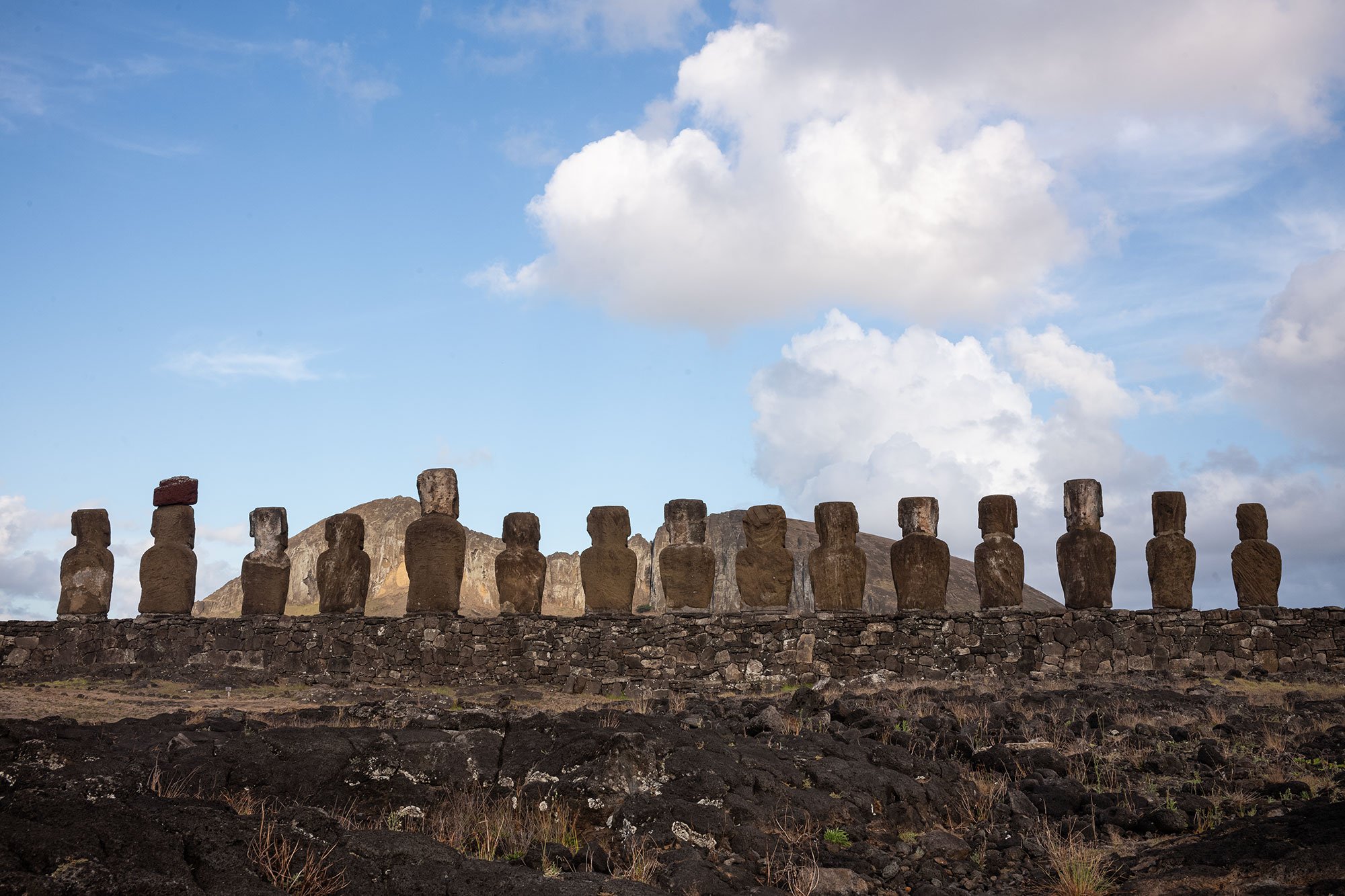
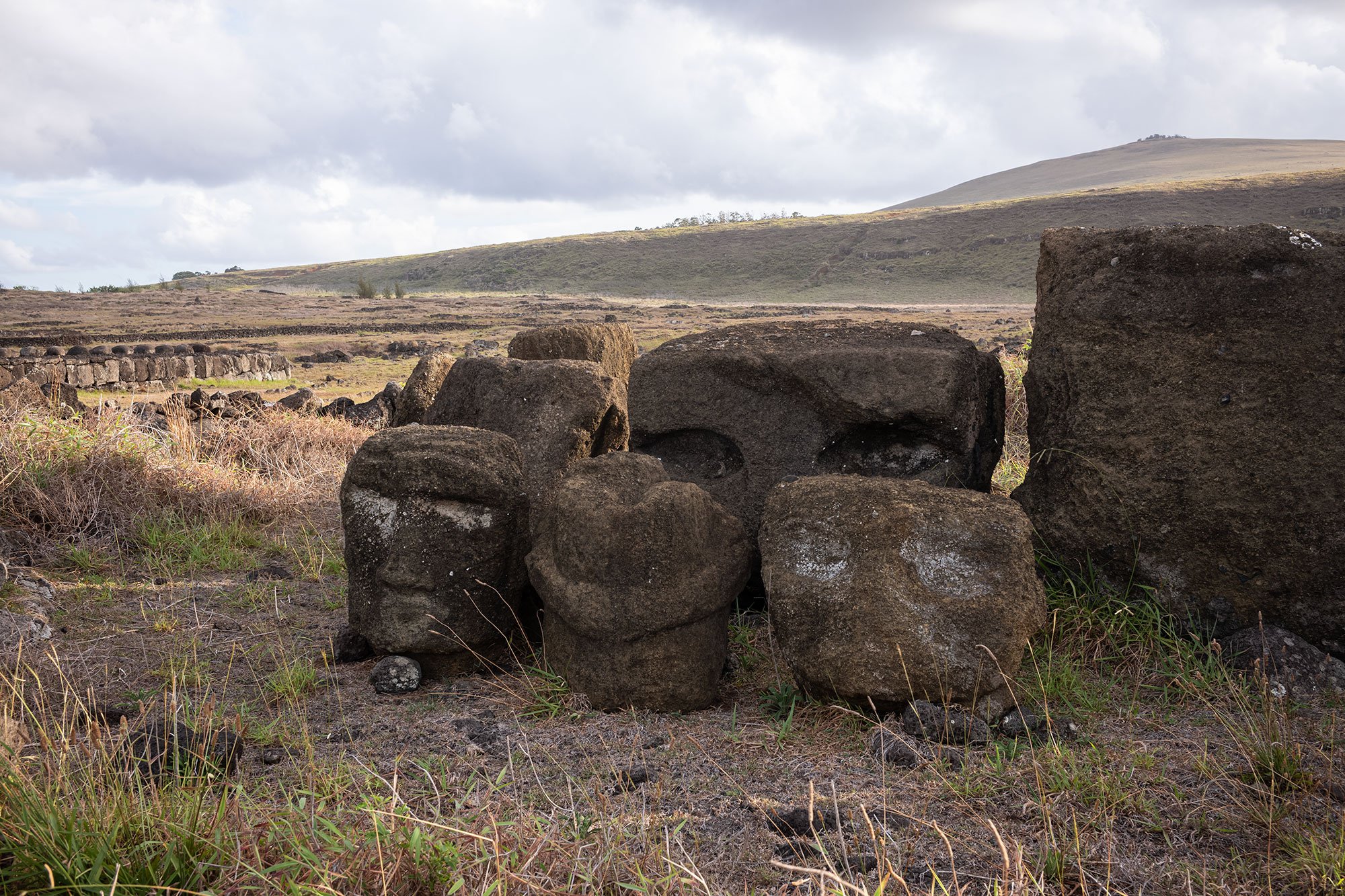
We make our way back around the moai and into the fields, where Yoyo points out various carvings that have been made in large rocks that dot the area. There are faces and fish and turtles and birdmen. Where some are harder to see, he pours red dirt into the grooves, making plain the outlines of the animals beneath our feet.

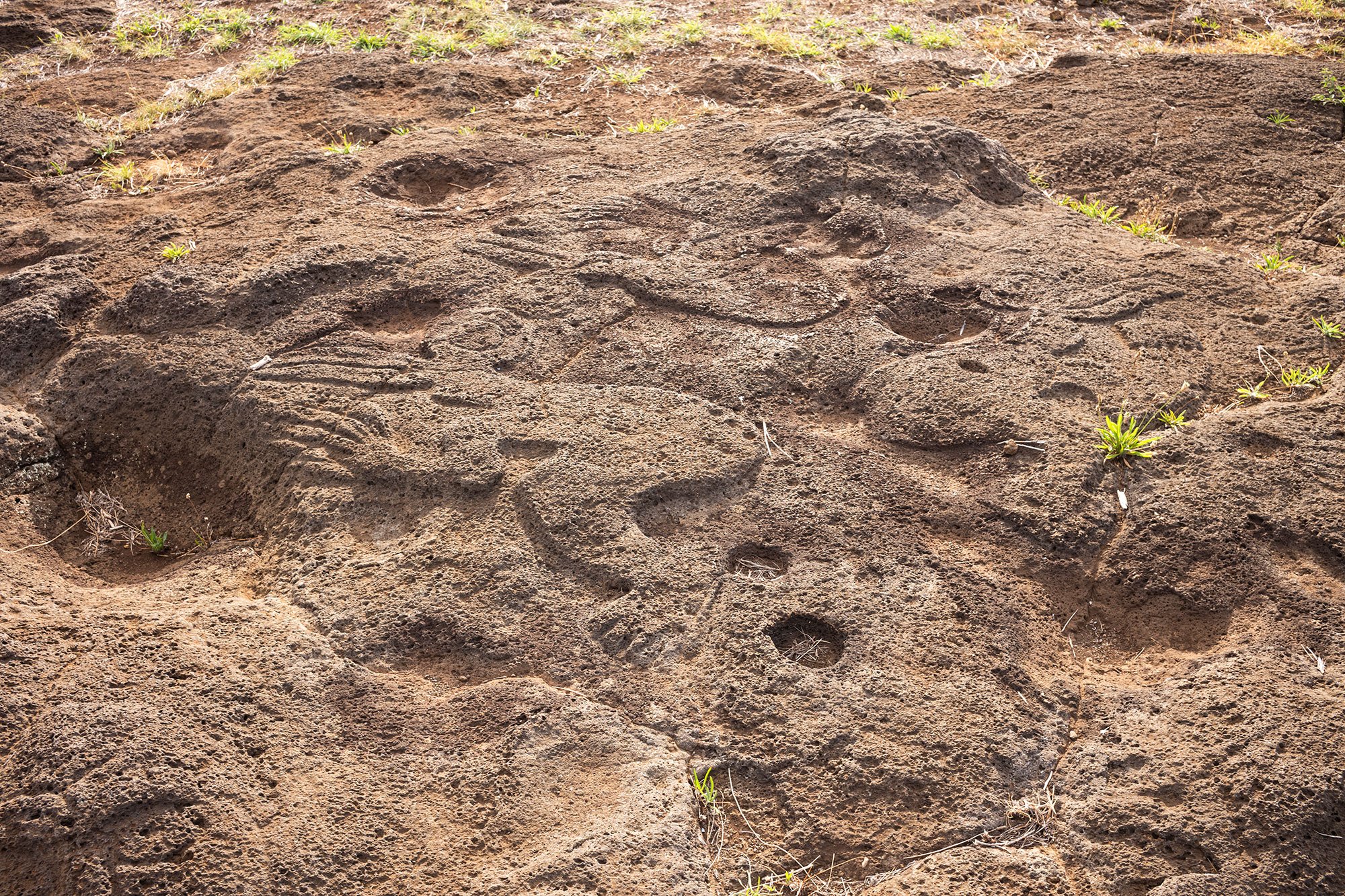


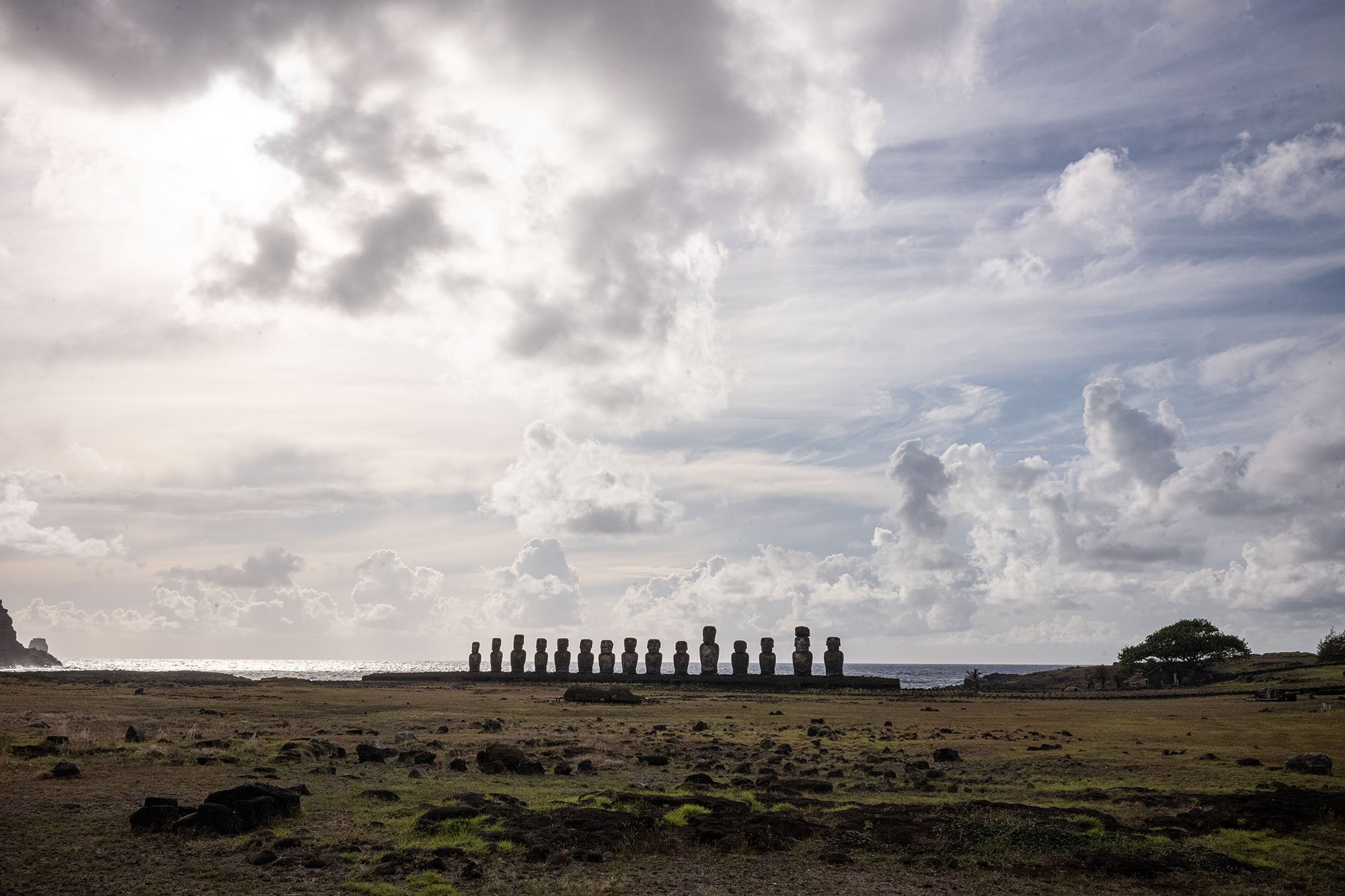
As we make our way back around towards the entrance he points out moai that are embedded in the fields. He points out the quarry in the distance, where we will be headed next. He also points out top knots that have been rolled to the spot, some that never made it atop a moai.
We are the only ones in the park and it’s a beautiful and serene place to be. A constant breeze blows in off the ocean and the tall grass sways around us as we continue our explorations.
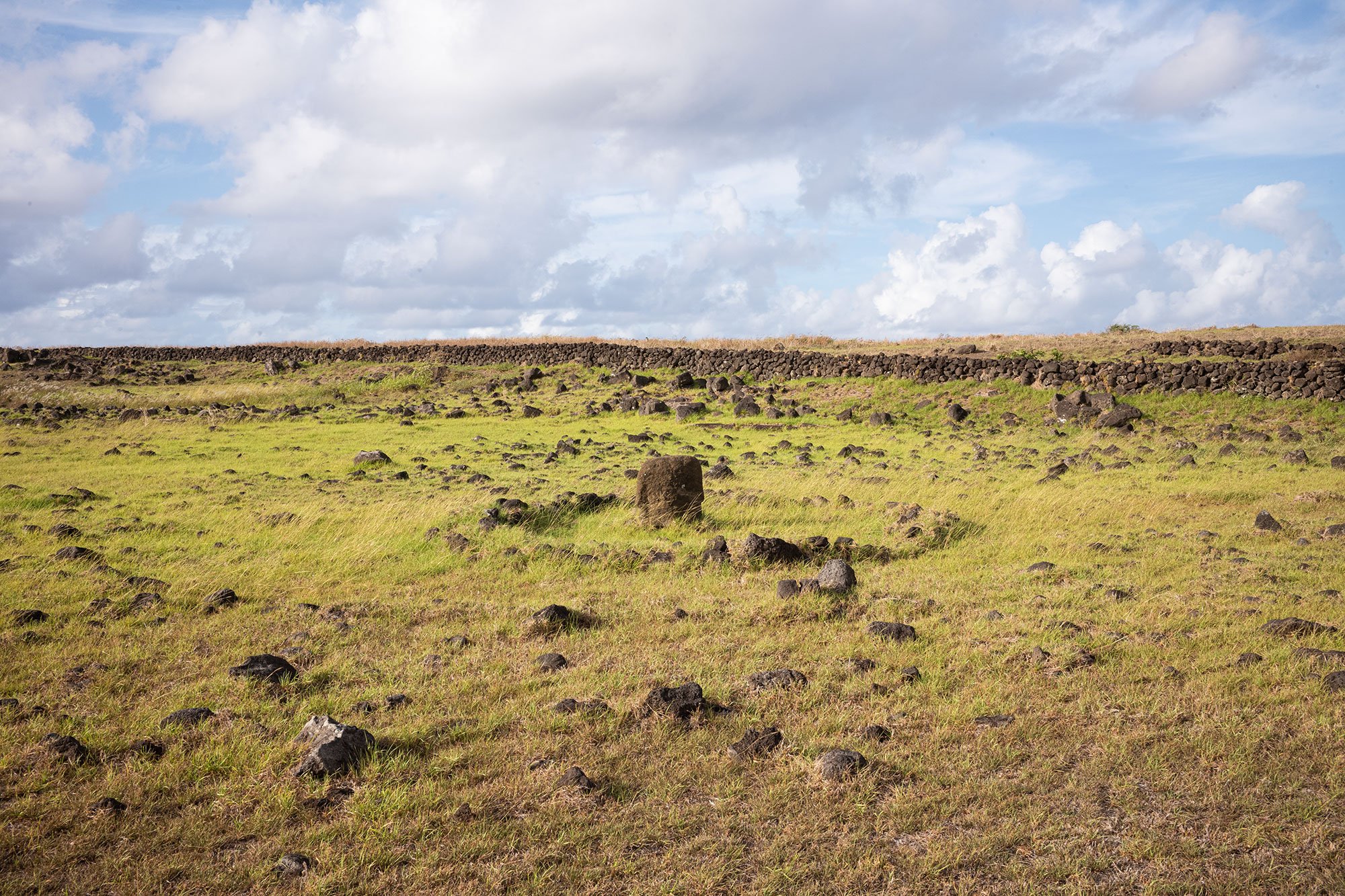
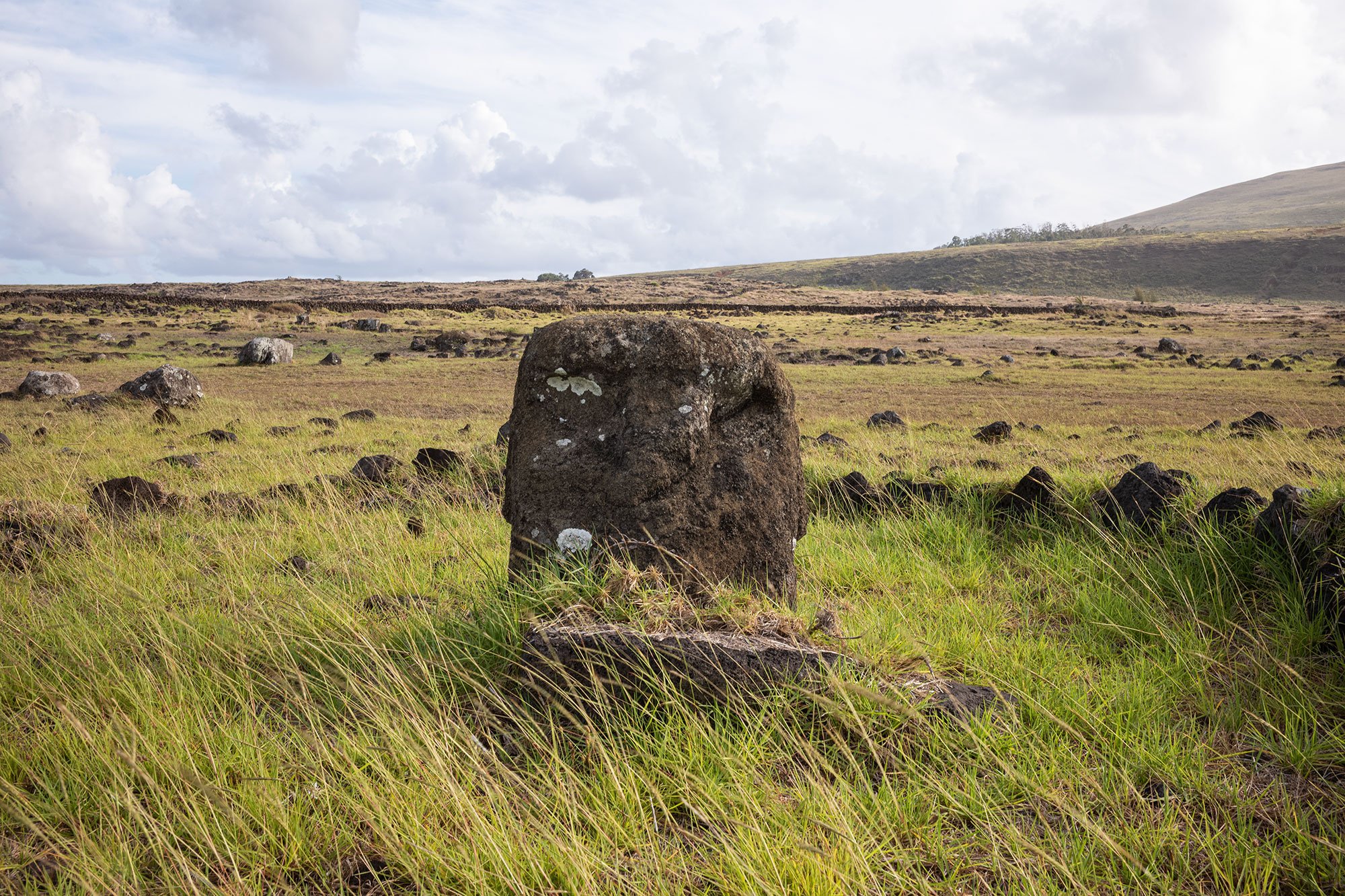

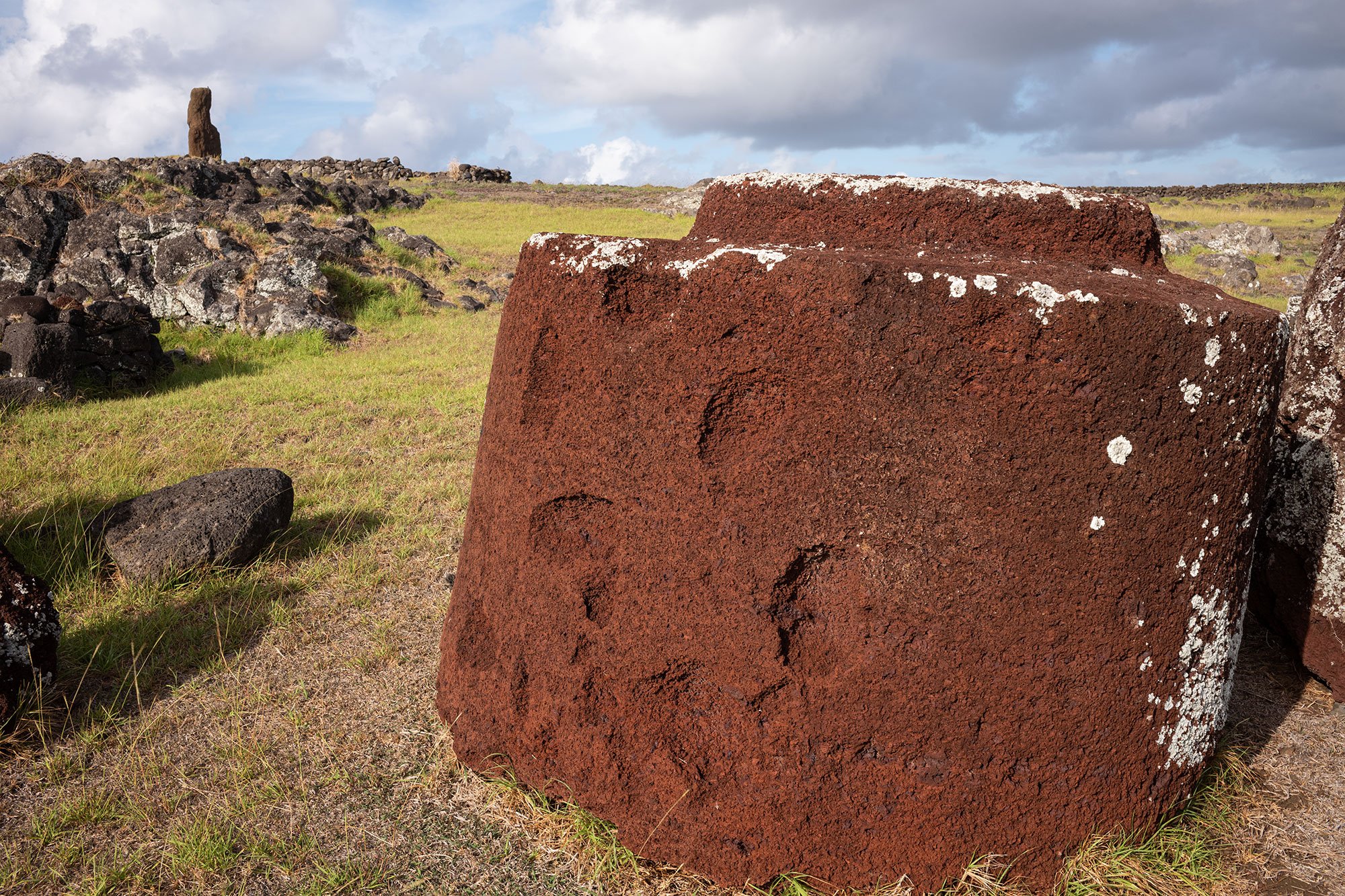

Back in the car we drive to Moai Tukuturi, the quarry from whence all the moai are hewn. As we approach, I can see moai dotting the slopes of the mountain in various states of repose. Yoyo tells me that there are more on the other side of the volcano, but that the area has been closed to visitors for a few years. I’m disappointed. I feel like I will never be able to get my fill of seeing moai.

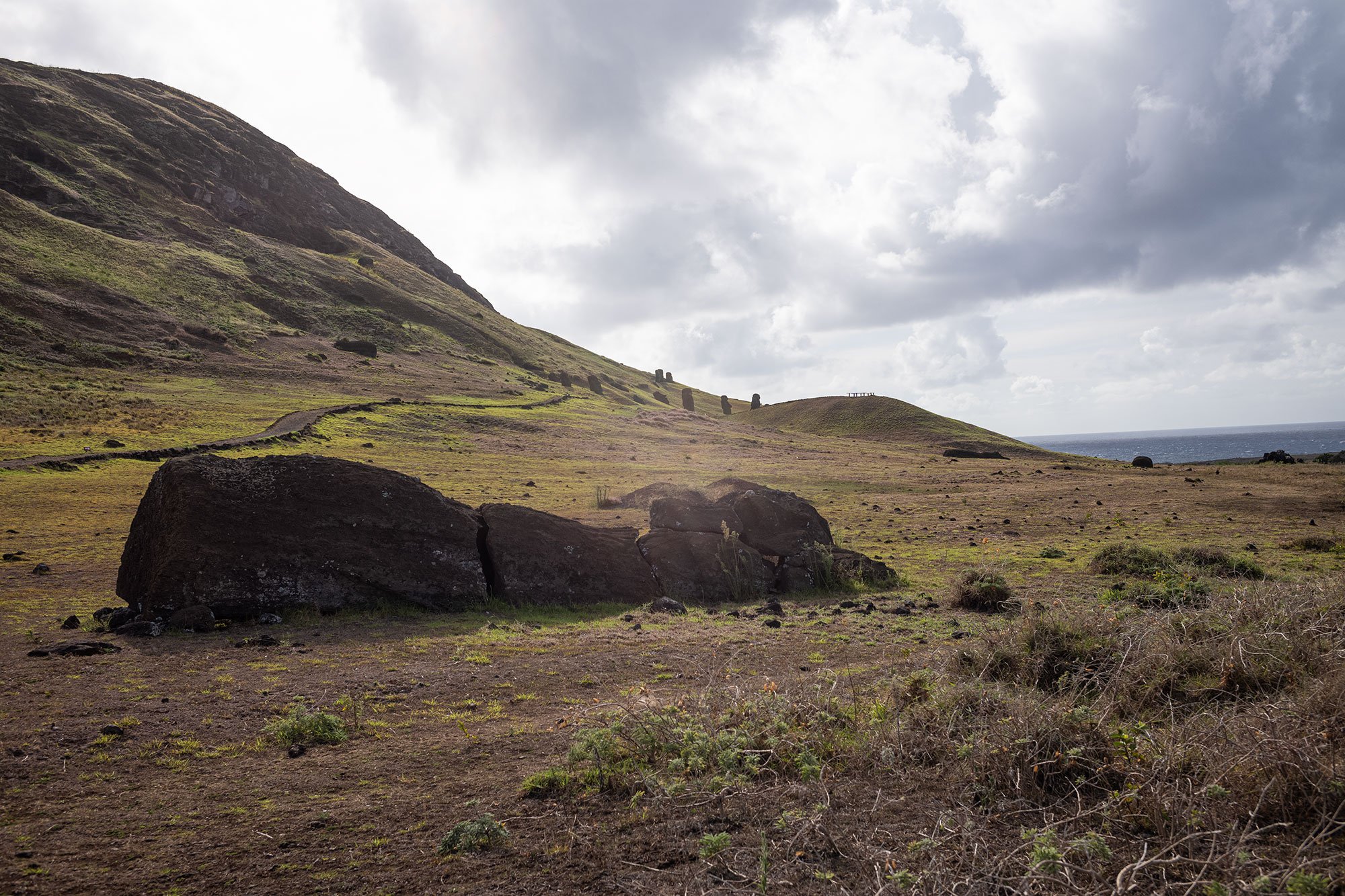
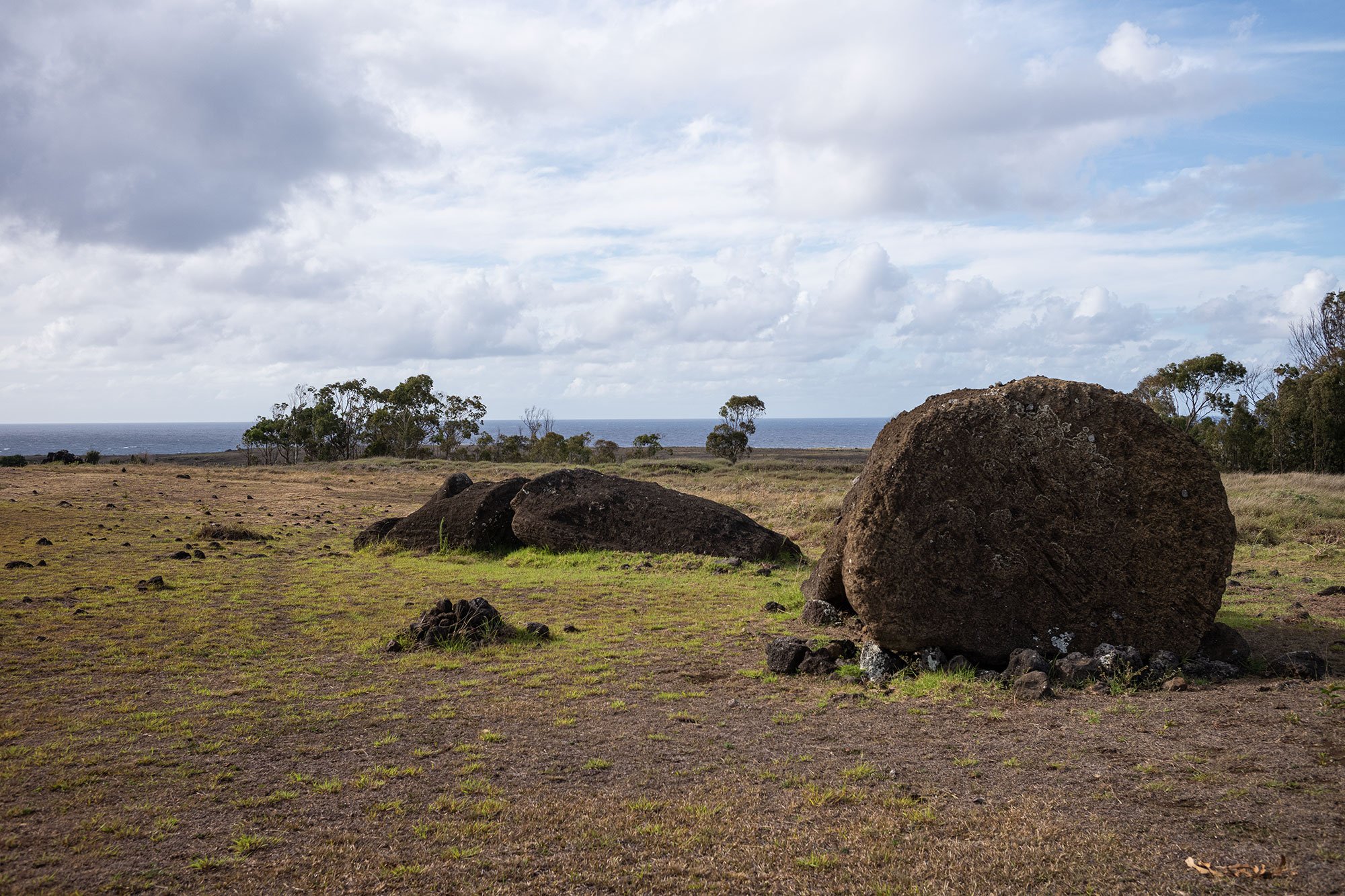
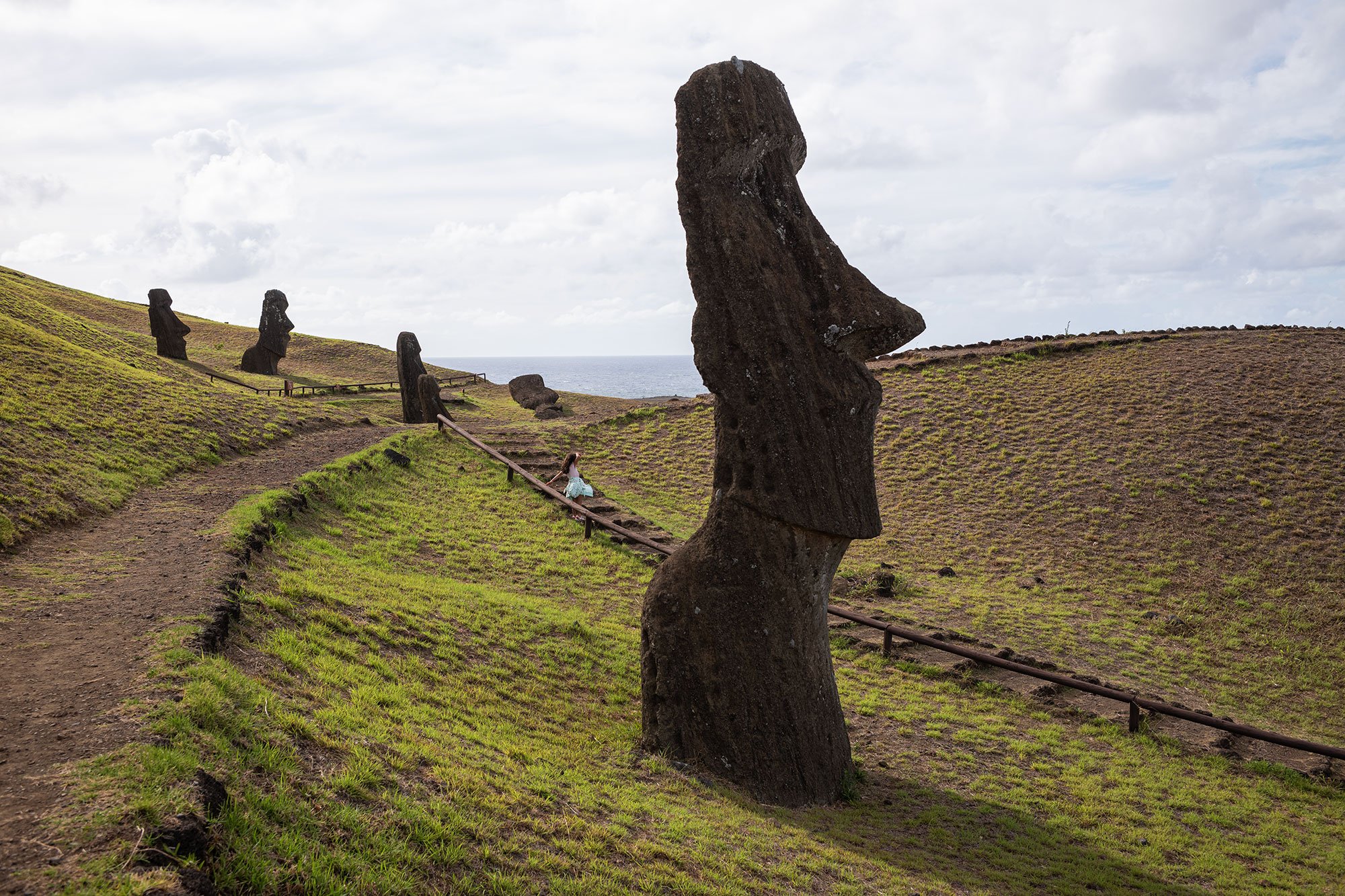
Yoyo introduces me to the area and walks me around its paths. At one point we stop and he points to a cafe we had driven past on our approach to the quarry. He tells me to take my time—he understands that I’m going to want to try and catch the light that keeps dipping in and out of the clouds—and that he’ll be waiting for me at the cafe. He tells me to make sure I take all the paths and to see the crouching moai just around the bend and to note the sailing ship carved on the chest of another, graffiti from another time.
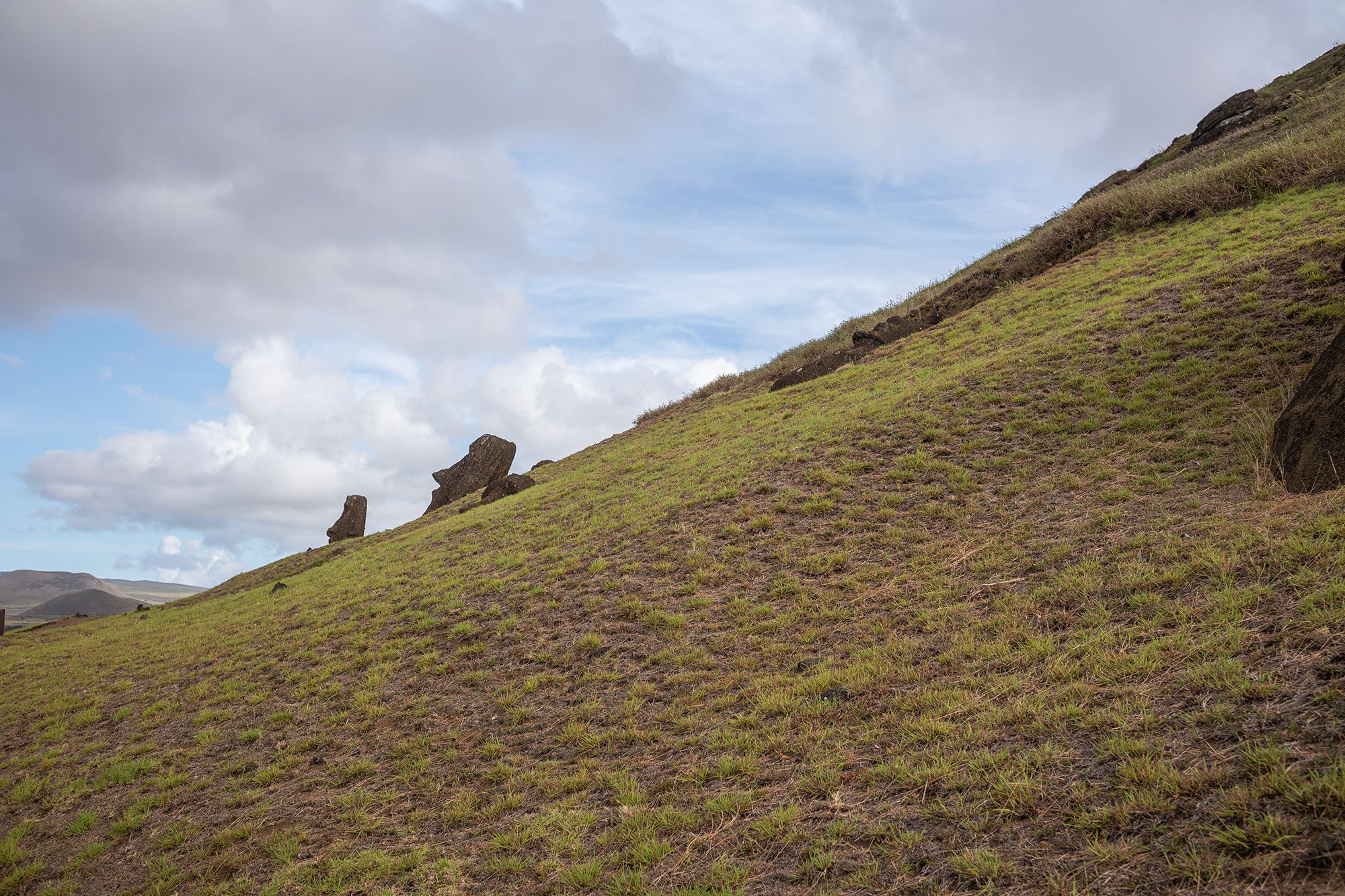
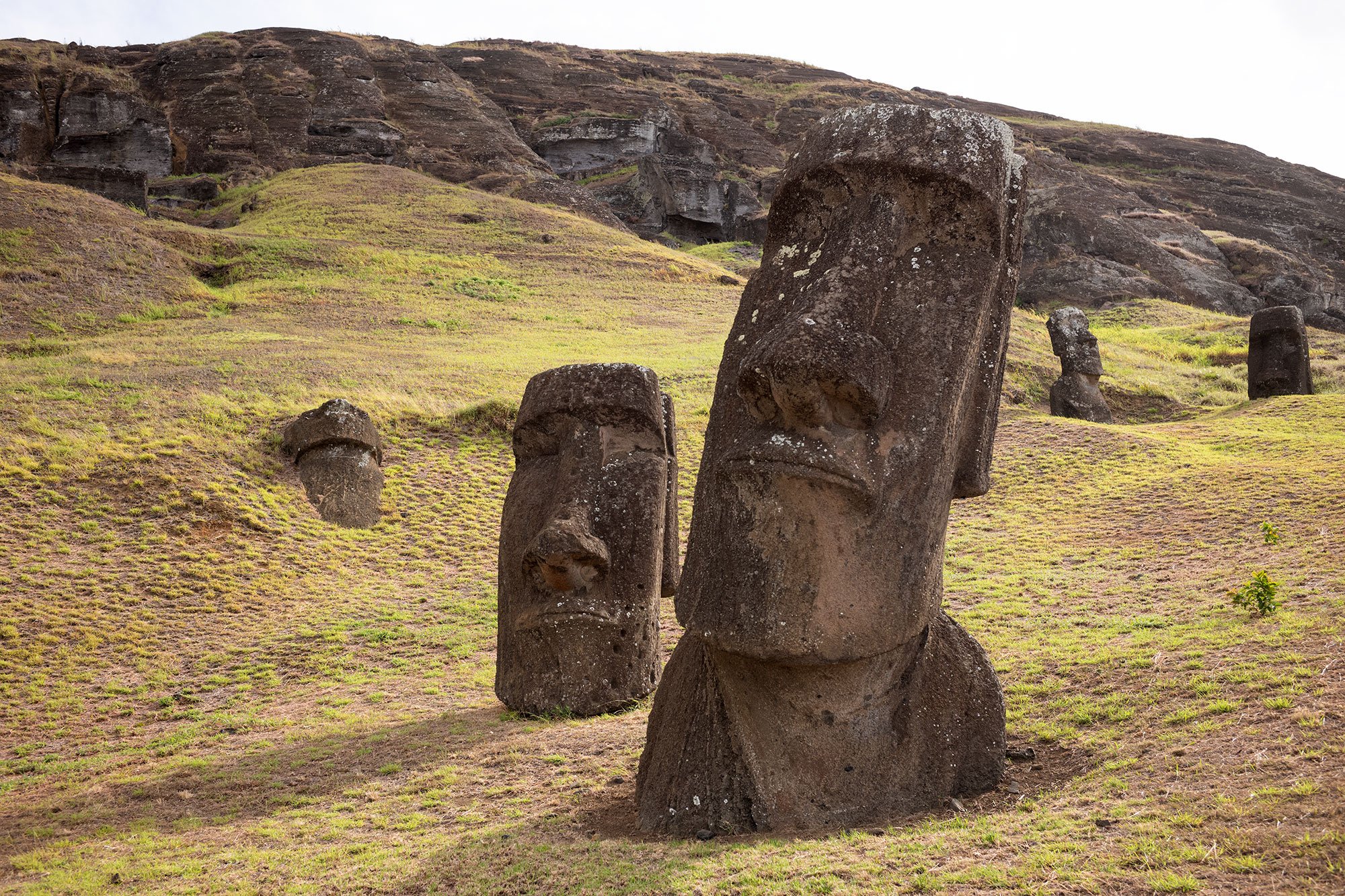
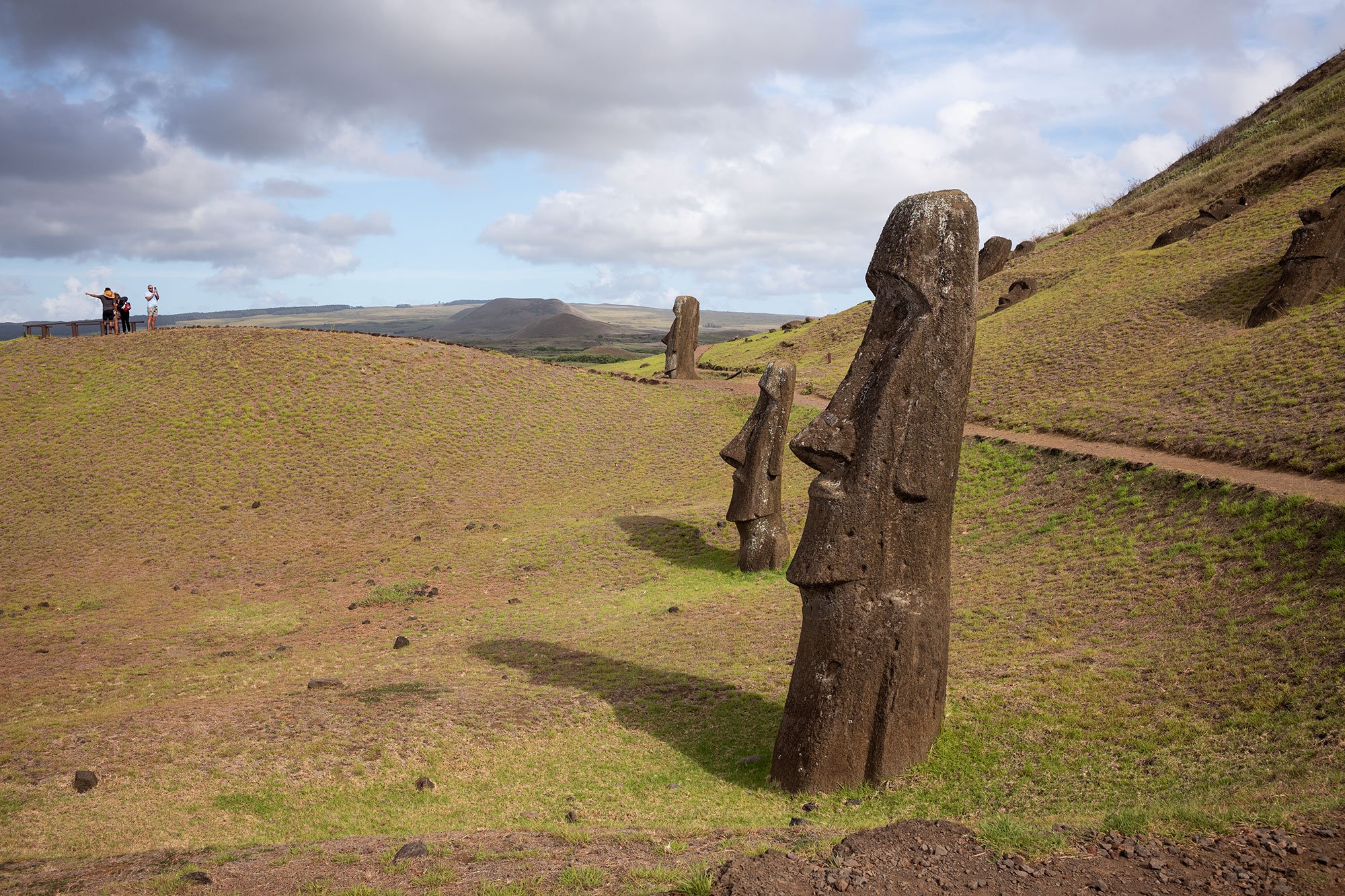


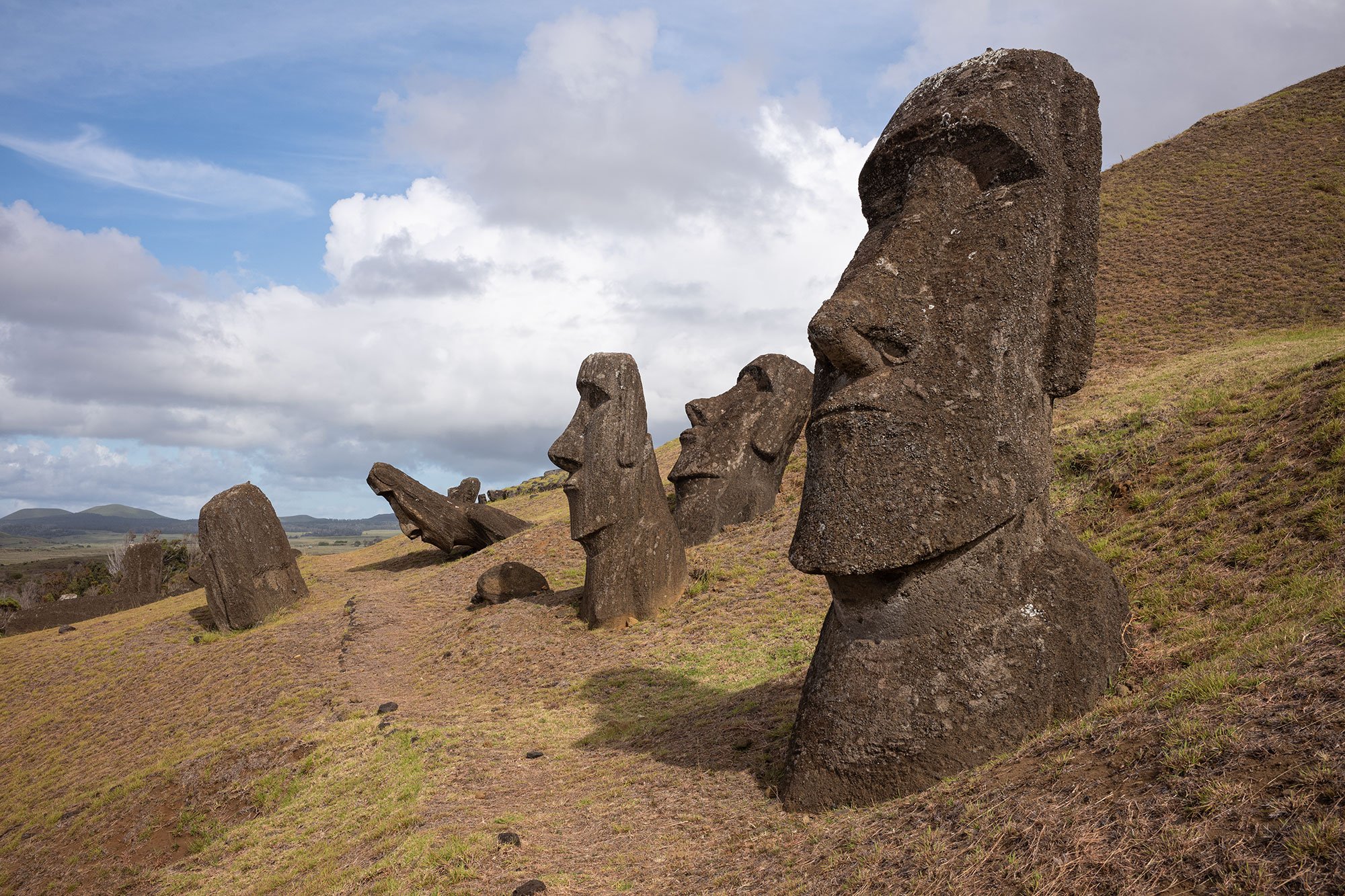
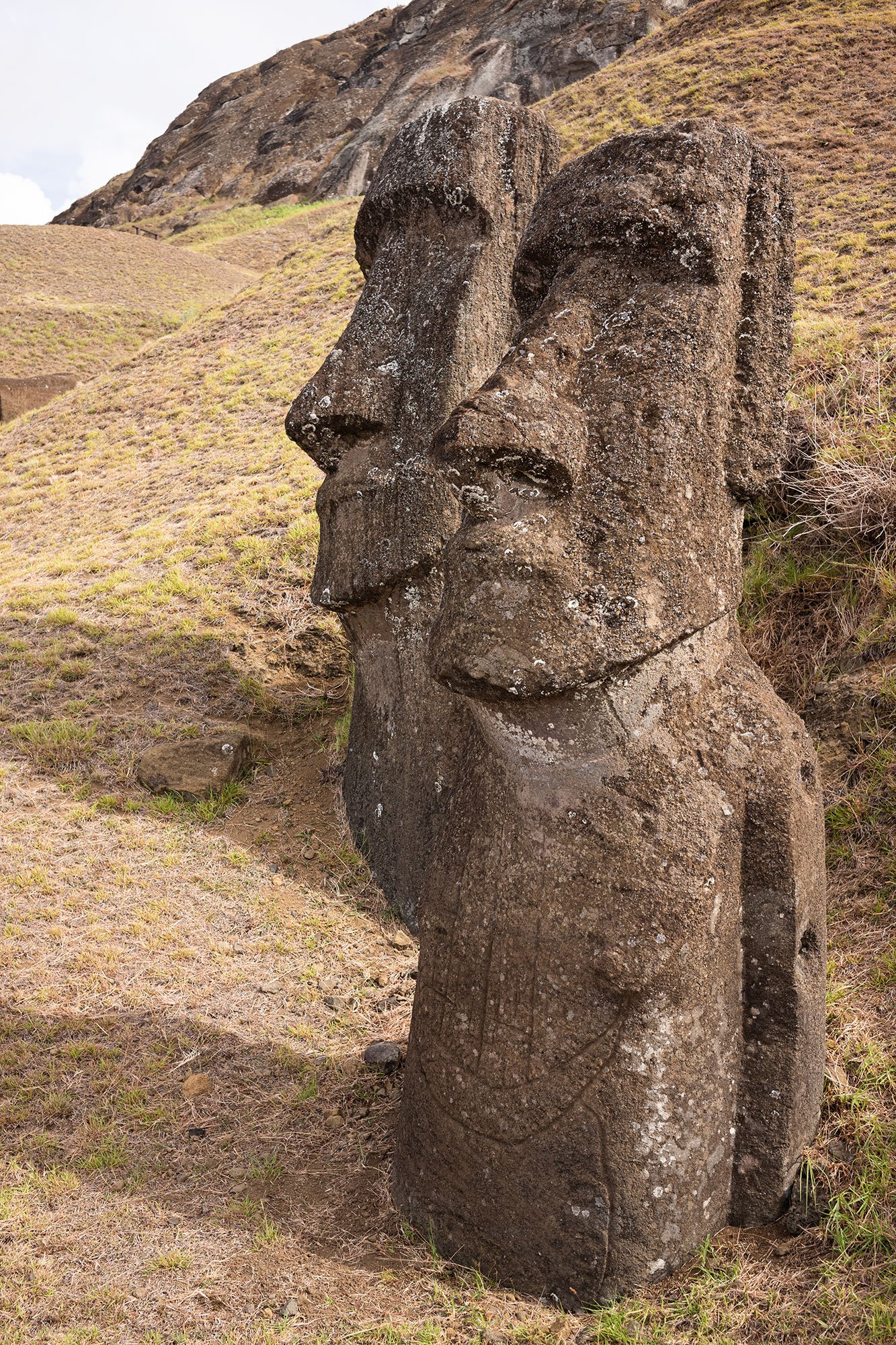
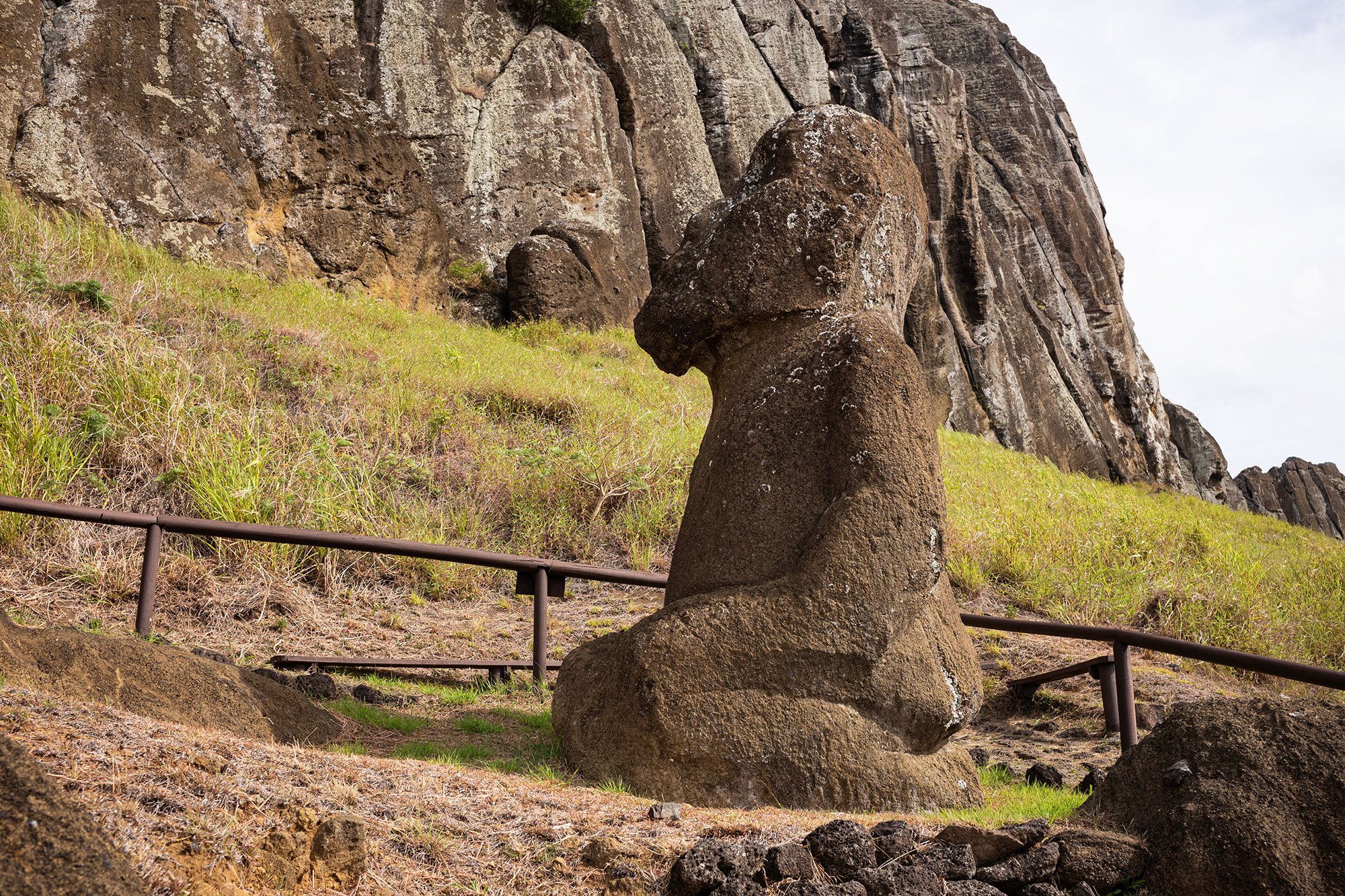
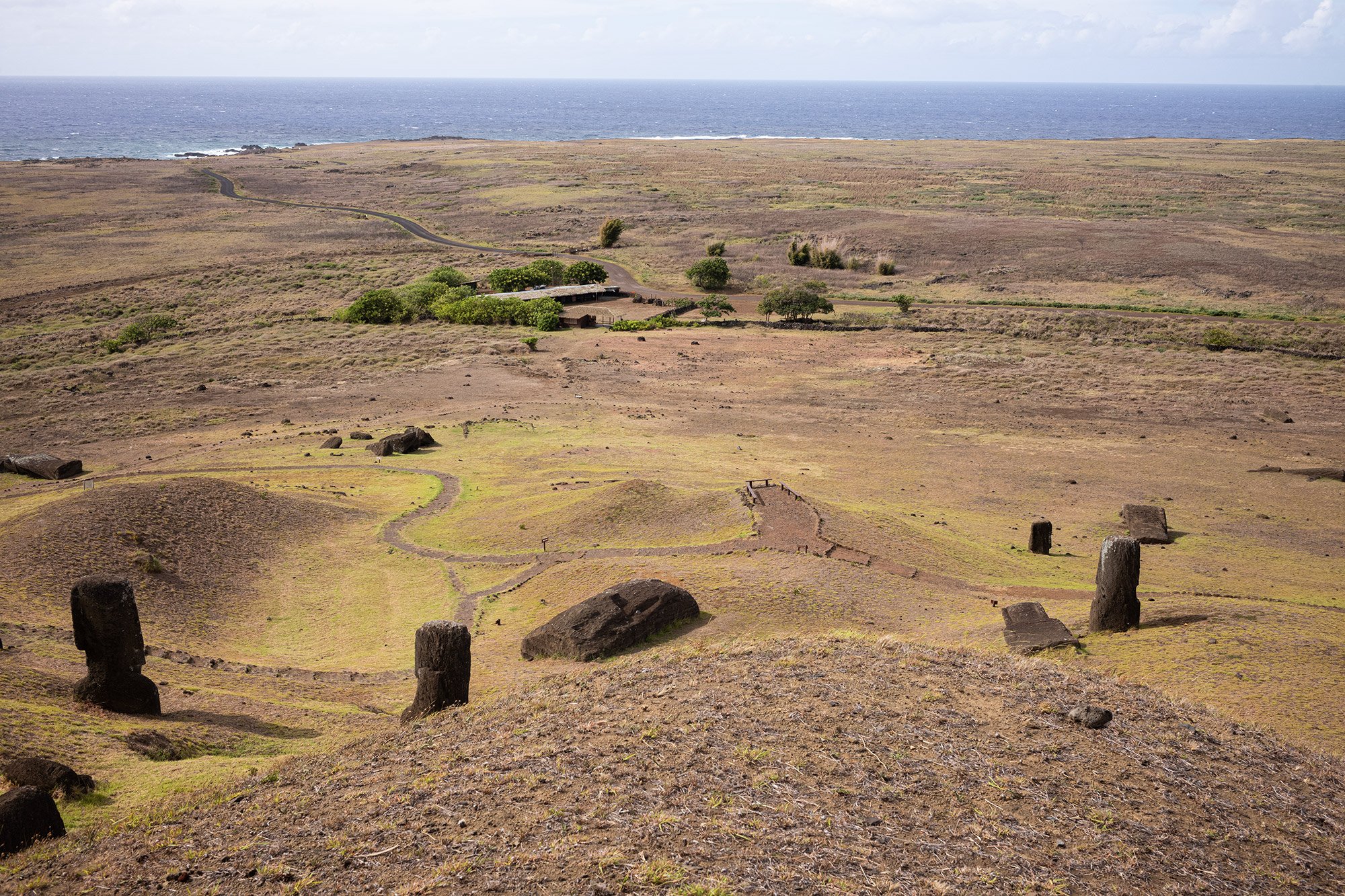
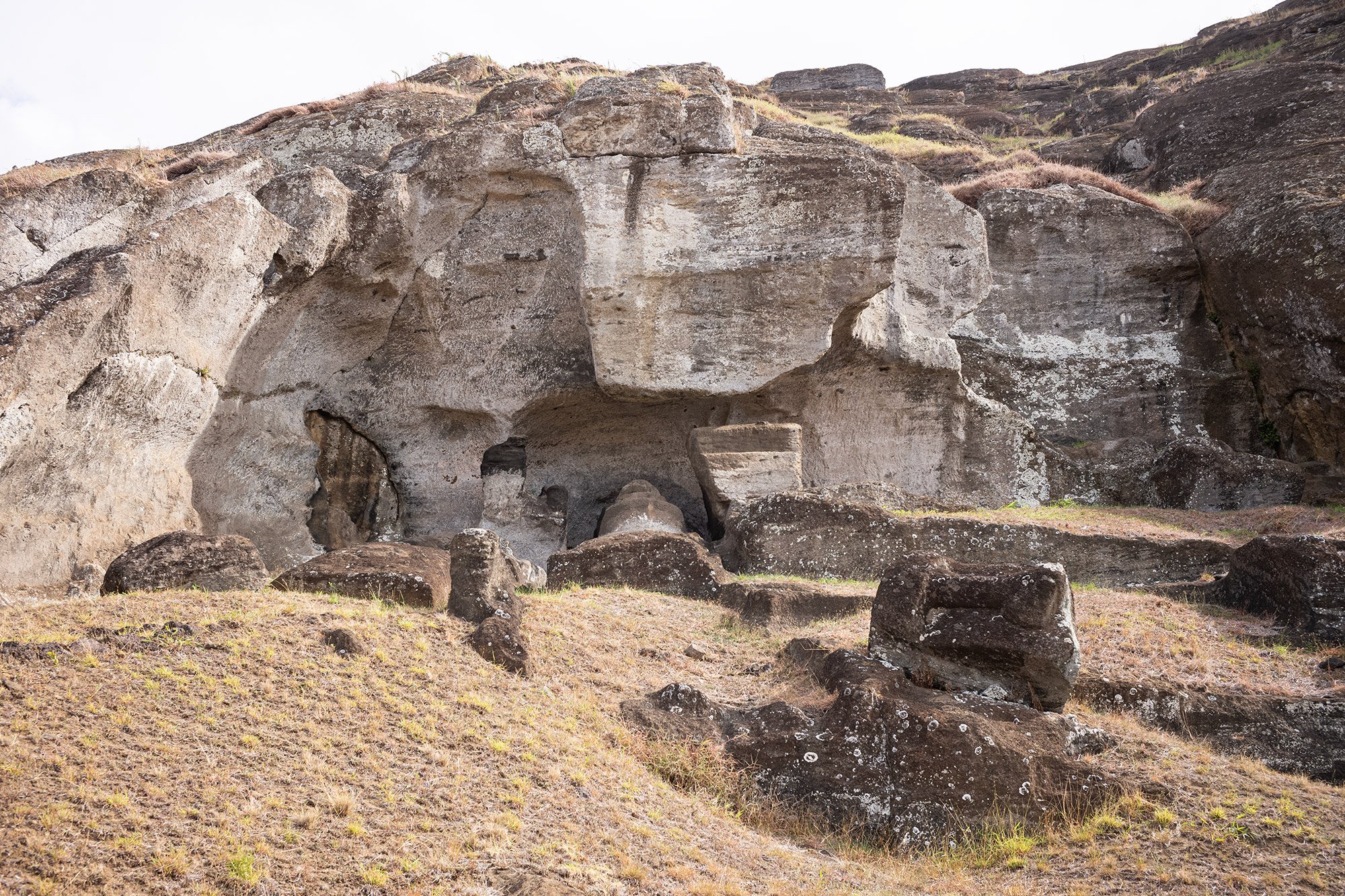
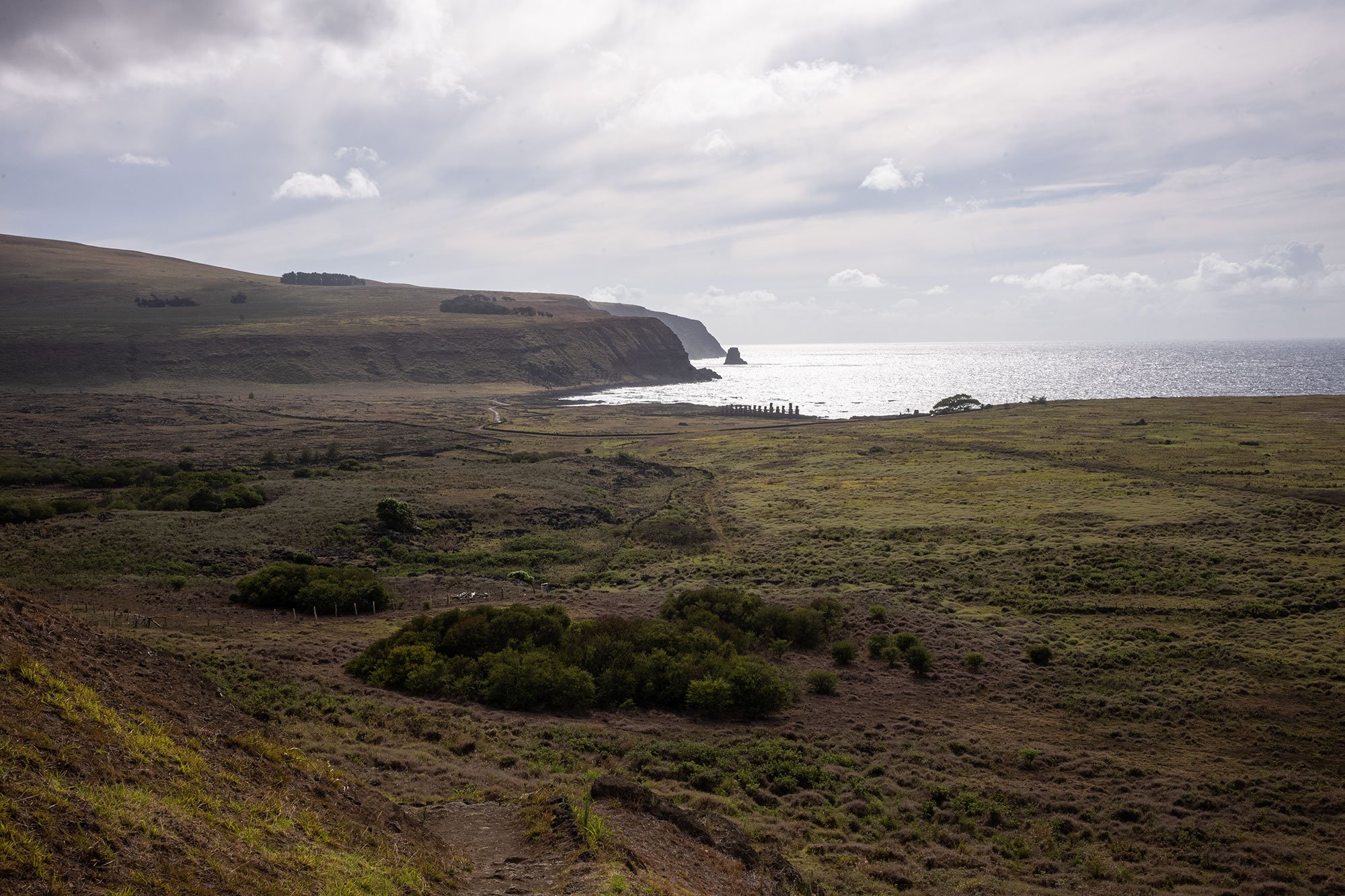
I meet Yoyo at the cafe and order a fish sandwich for lunch. It’s huge with chunks of tuna and avacado between a delicious bun.
Over lunch I ask Yoyo about his wife—how they met and how long they’ve been together. He tells me they had two ceremonies: one traditional and one Catholic. He says i can watch the traditional one. It’s on YouTube. I imagine it’s a video they uploaded it themselves but as we continue talking I realize it’s something else. He’s married to a former Miss Chile—the first from Rapa Nui—and when she had decided to get married on the island in a traditional ceremony a tv crew asked if they could film it.
He tells me it was a great party, and I can see him getting lost in the memory. I sit and look out towards the quarry, at the cone of the volcano and the moai dotting the slope.

Yoyo tells me that Pau had told him I was interested in going for a swim. I nod and after lunch he takes me to Ovahe, one of the two beaches on the island. The sea is rough—it’s been rough since I arrived—and while I wade into the water it’s too rough to swim.
He asks if I’d like to visit the other beach instead, but tomorrow I’m to do a hike in the north which ends at the beach. I want to save it as tomorrow’s reward.
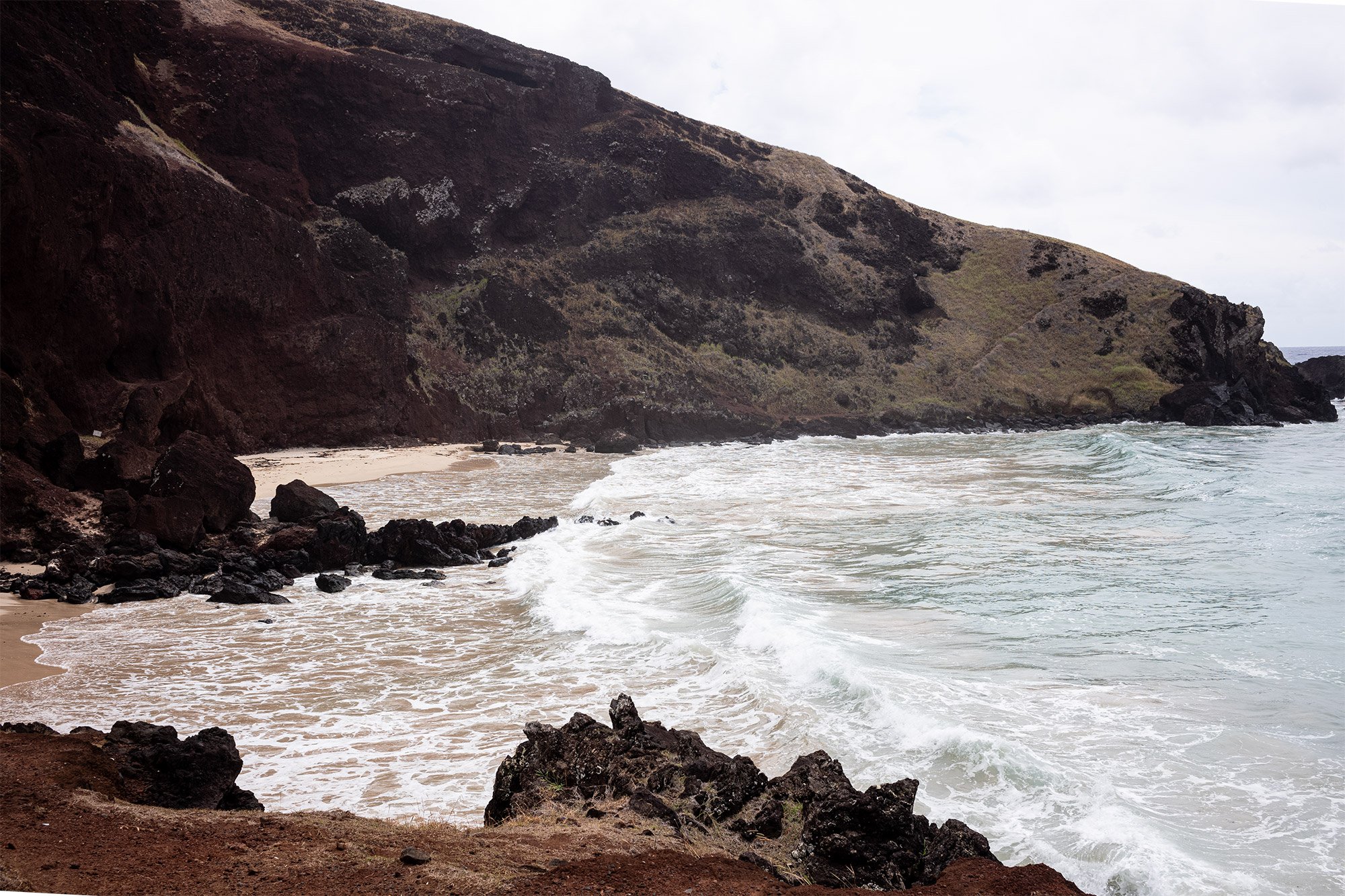
We drive back towards town, passing through a grove of eucalyptus trees. Immediately we’re surrounded by the calming scent of the trees and I close my eyes to focus on the sudden change in temperature and the air that envelopes us. All too soon we are on the other side.
• • •
Back in town, Yoyo drops me off at my cabin. I won’t see him tomorrow; another guide is going to take me on my hike, but we’ll see each other the day after.
I shower and change and step out to explore the town. Children swim by the marina. From the docks I can see a sea turtle bobbing in the water. Nearby, there’s natural pools in which you can swim. Signs point out that the sea turtles are a protected species and will sometimes find themselves in the same pools.
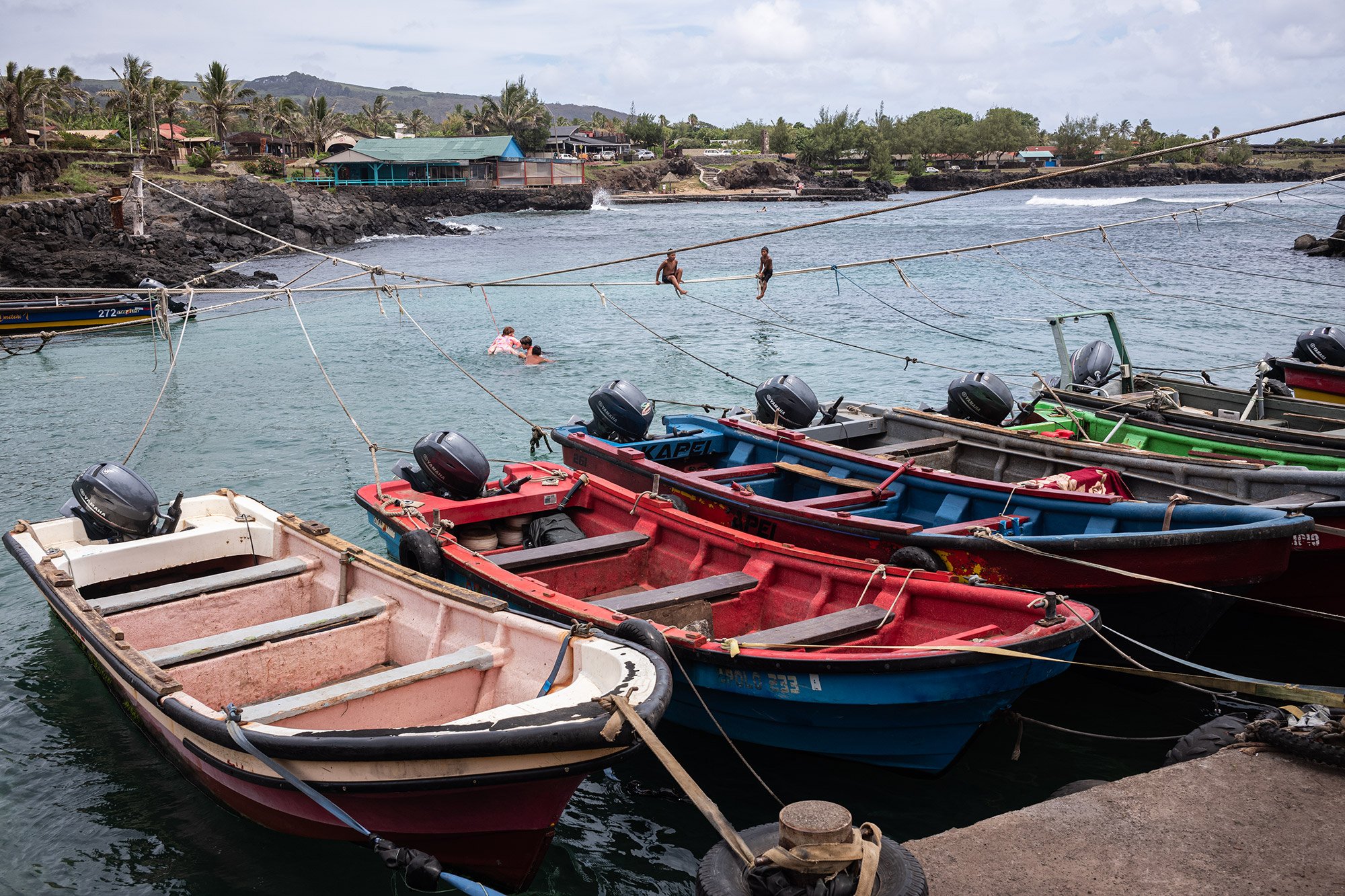
I continue around the town and walk north along the coast to the cemetery en route towards Ahu Tahai, where I’m planning on watching the sun set on the same day. The last time I saw the same sun rise and set over the ocean on the same day was in Zanzibar, and I’m excited to repeat the experience on another island in another part of the world.
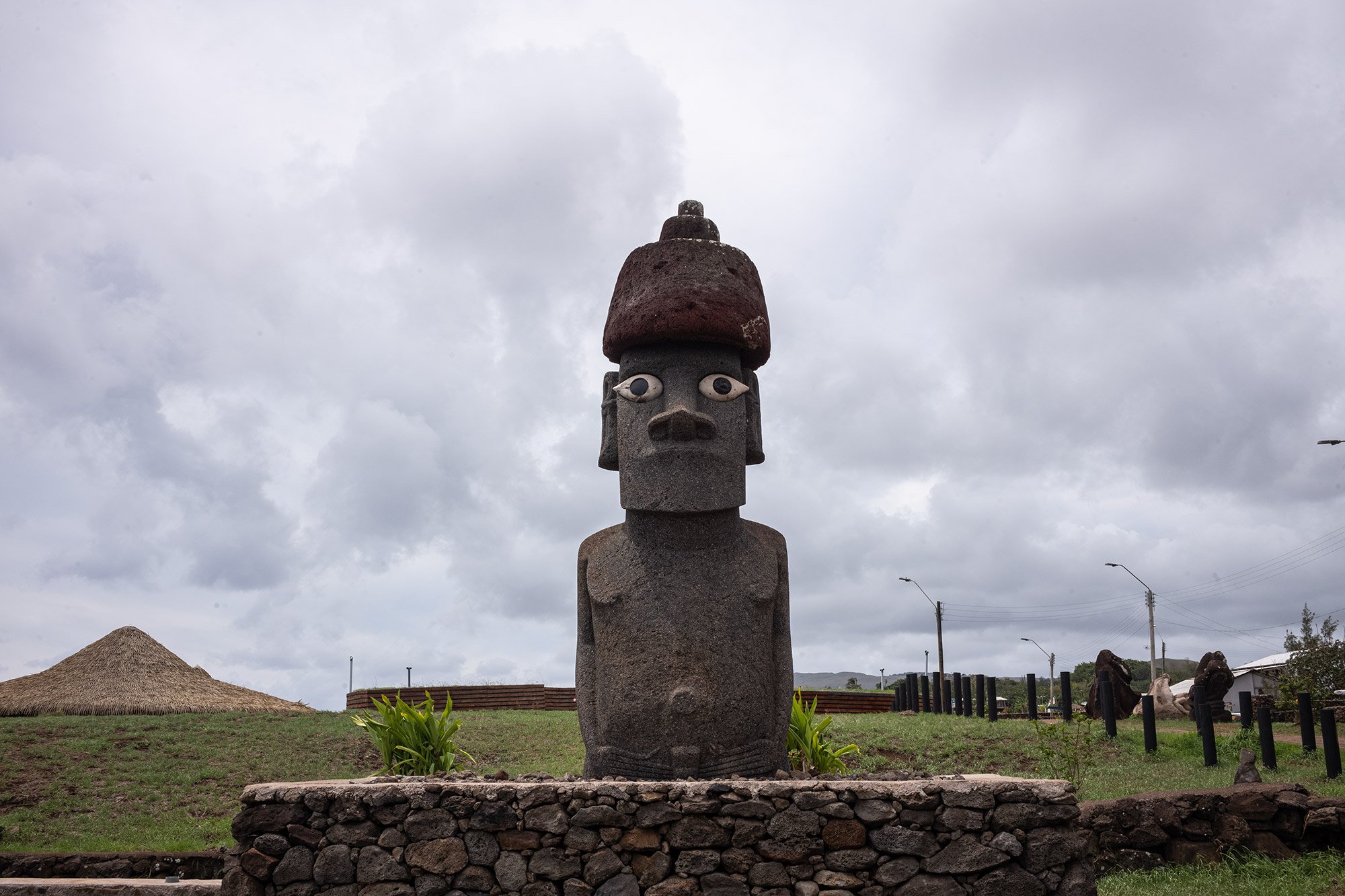

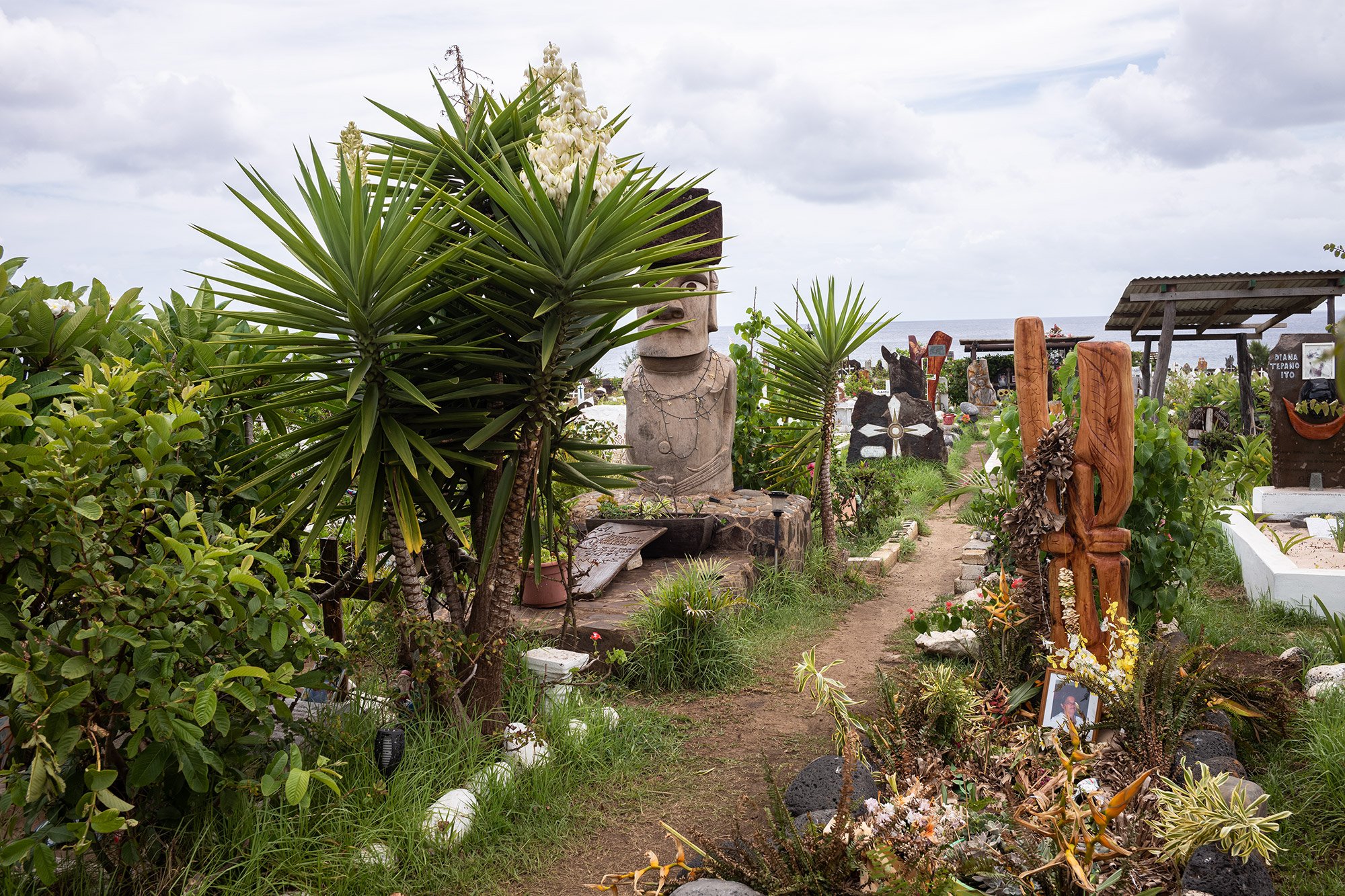
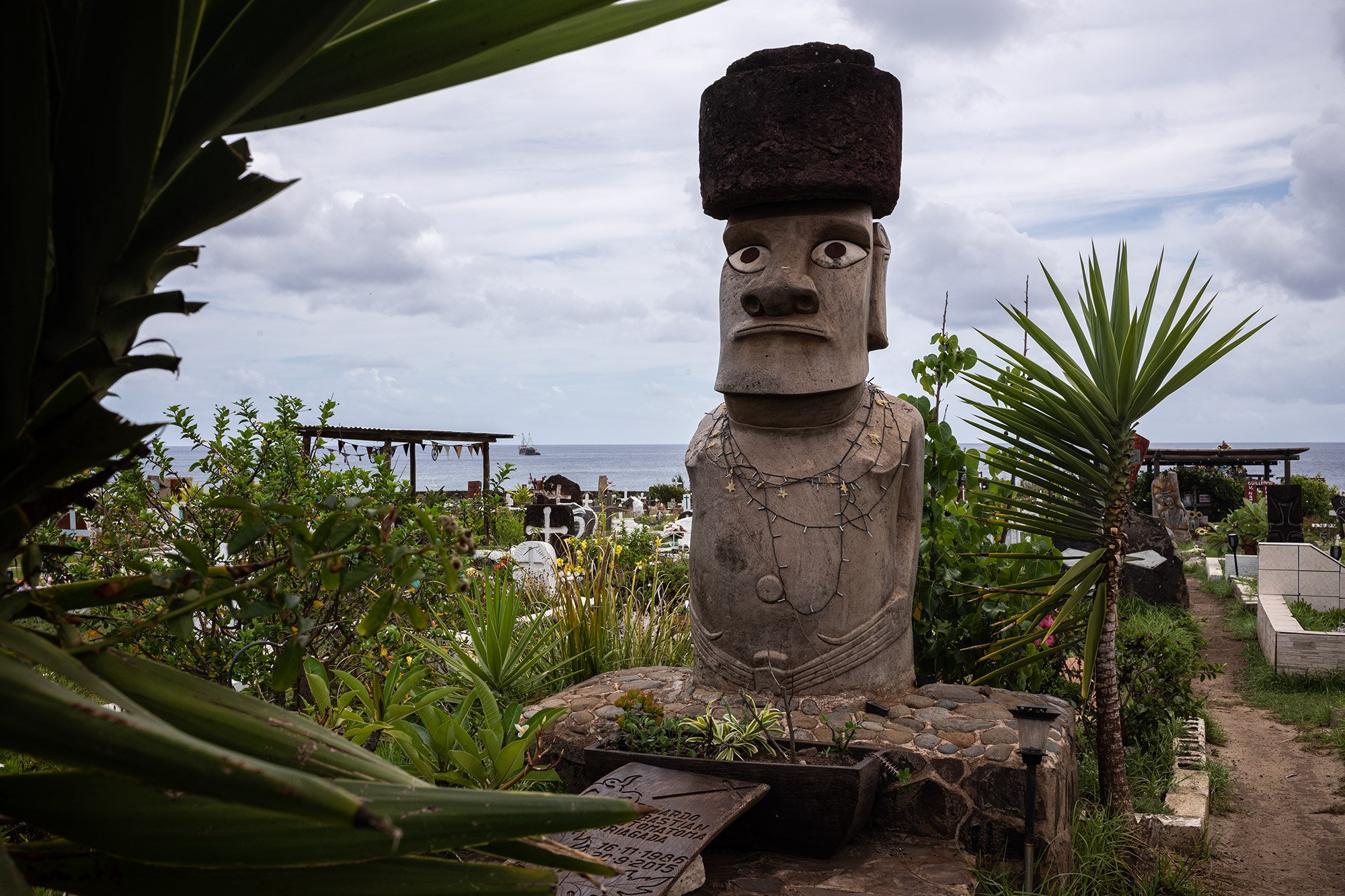
I’m early for the sunset. My watch has inexplicably reset itself to Santiago time and so it’s two hours earlier than I think it is. It takes me a while to realize my mistake even as I wonder at how the sun can drop so quickly in so few hours. Once I do, I walk back to my cabin to take care of a few things before heading back to sit on the lawn and watch the sun disappear behind the clouds.
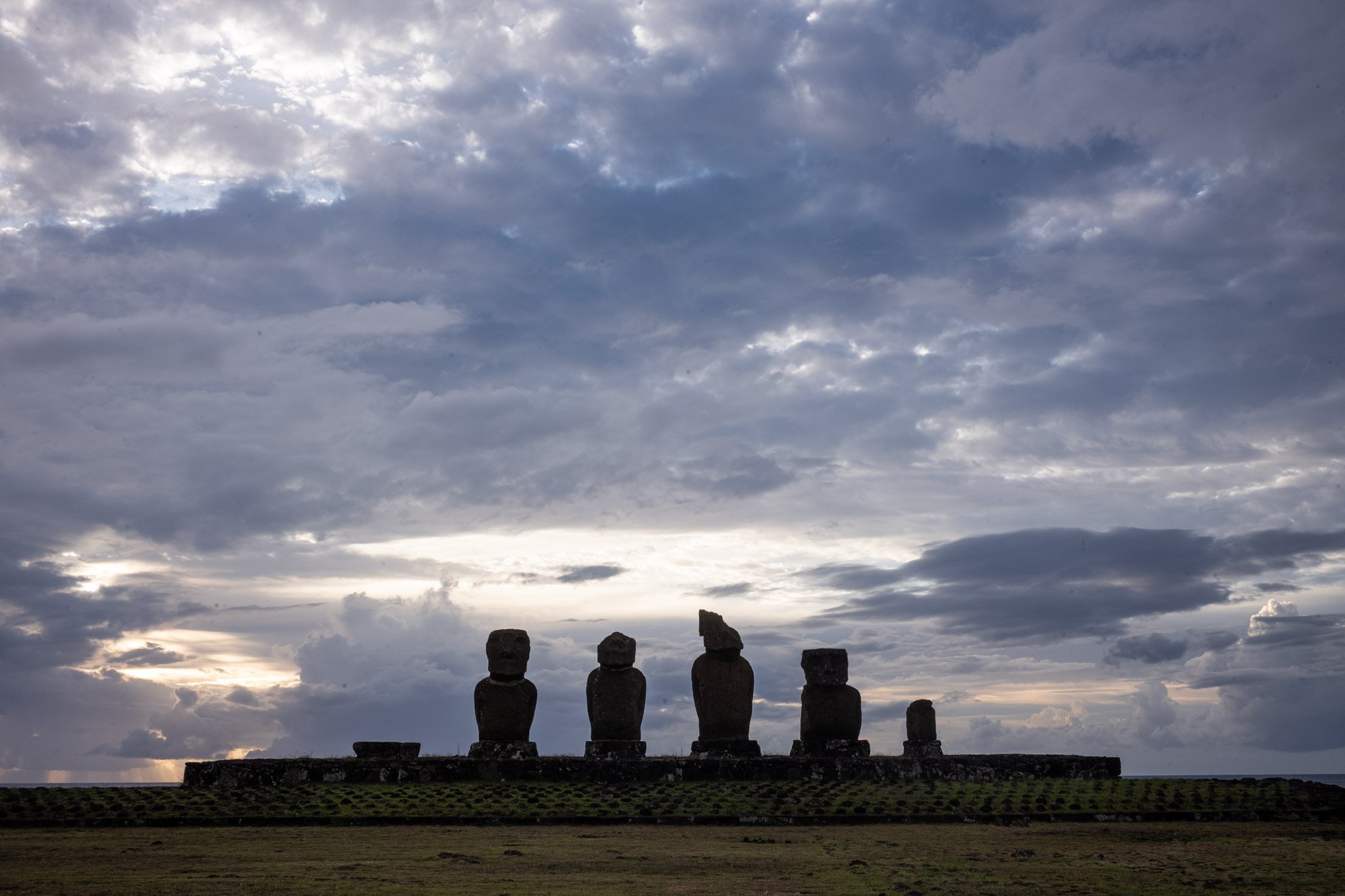
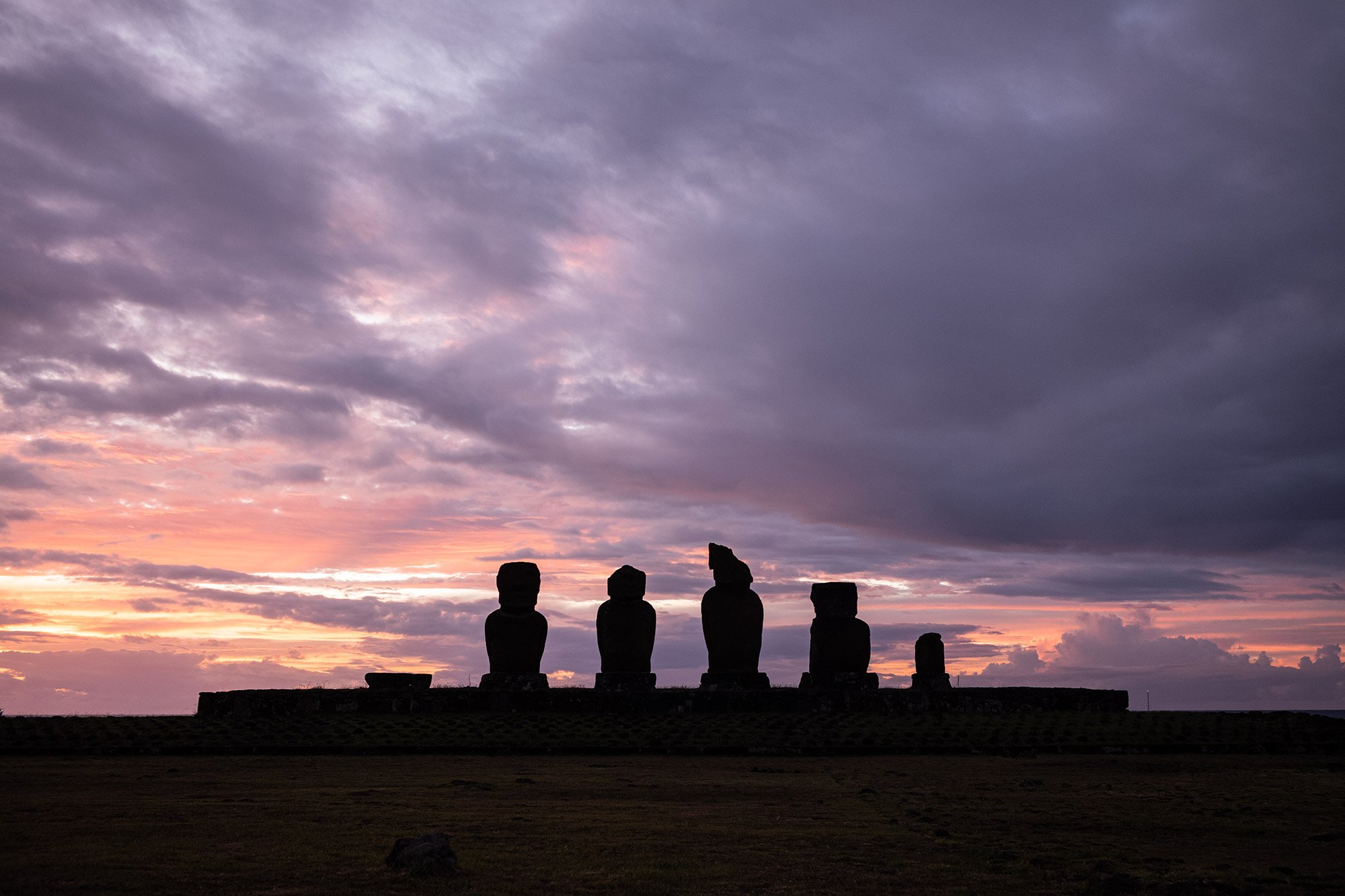

I walk back home under dramatic skies, retracing my steps past the cemetery and the parks that line the ocean. On the corner of the street where I live there’s a soccer pitch and I linger to watch the match in progress. I feel like I could be almost anywhere. And then I turn to my right and see the ocean and the silhouette of a moai watching over the town and me, protecting us and keeping us safe.
17 February 2023
🗿
